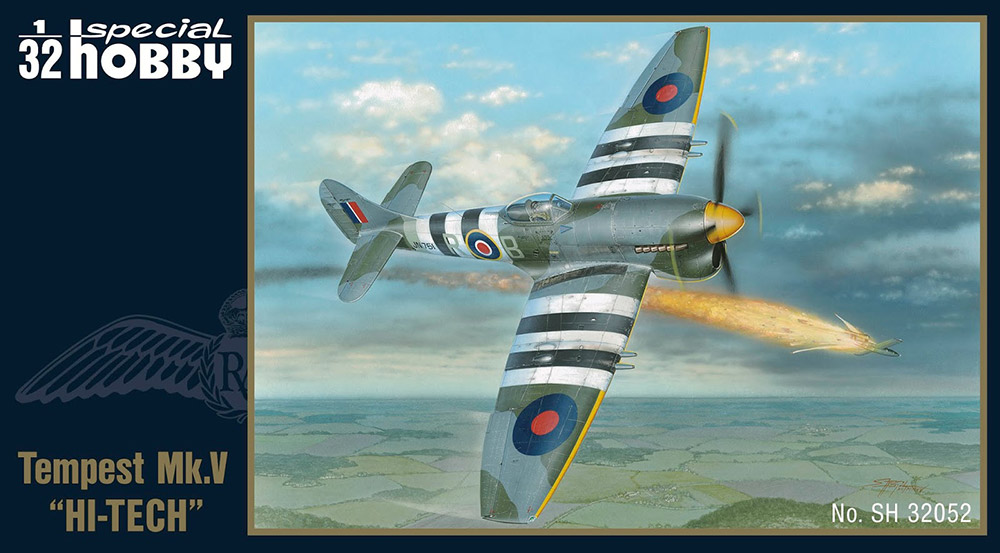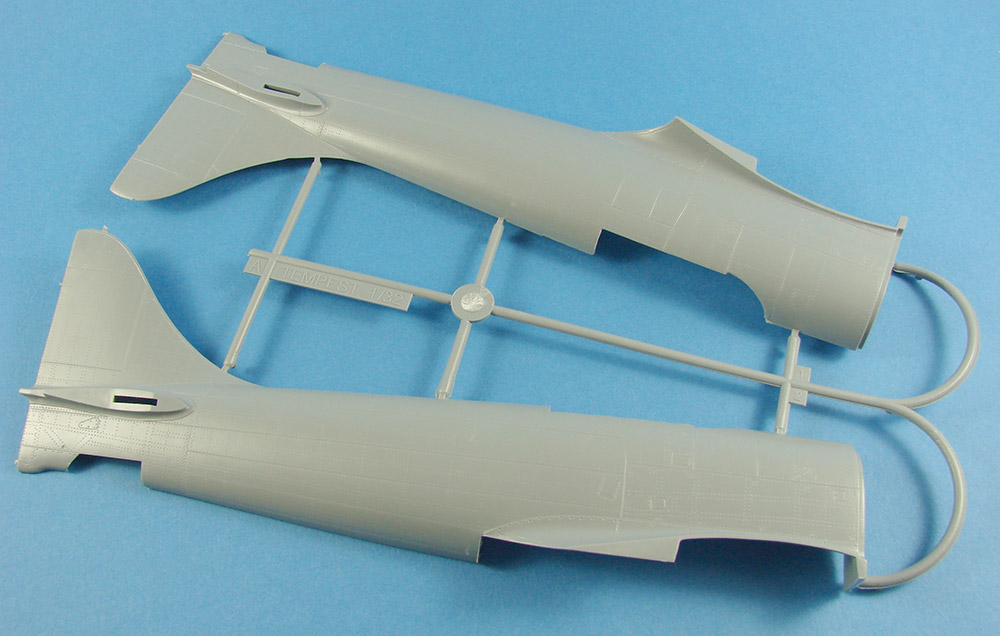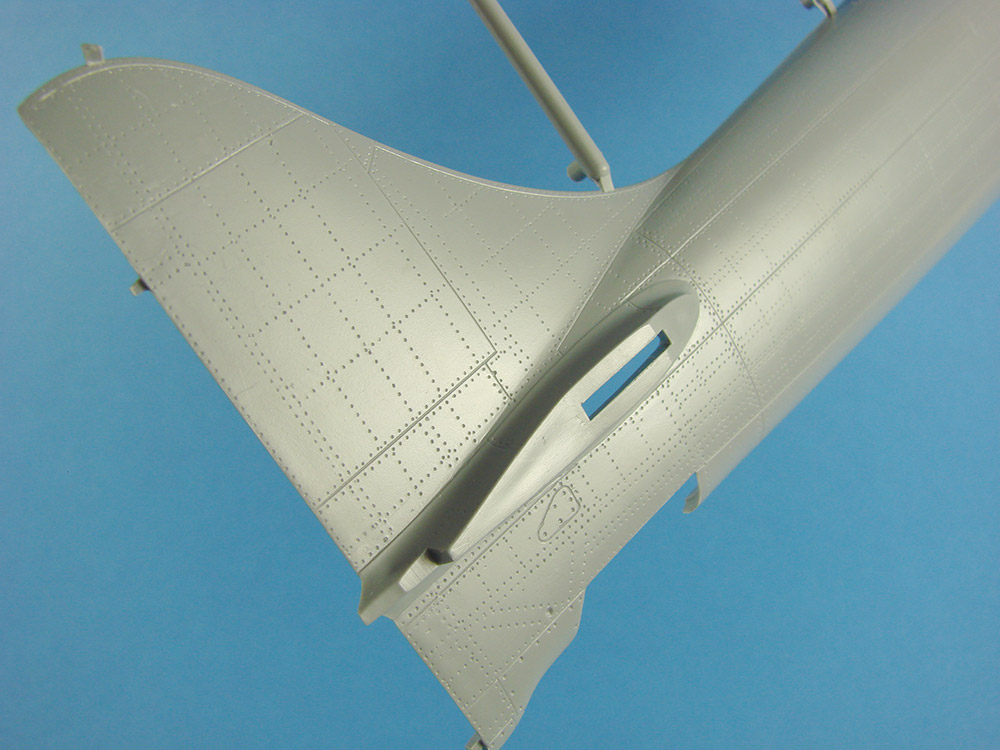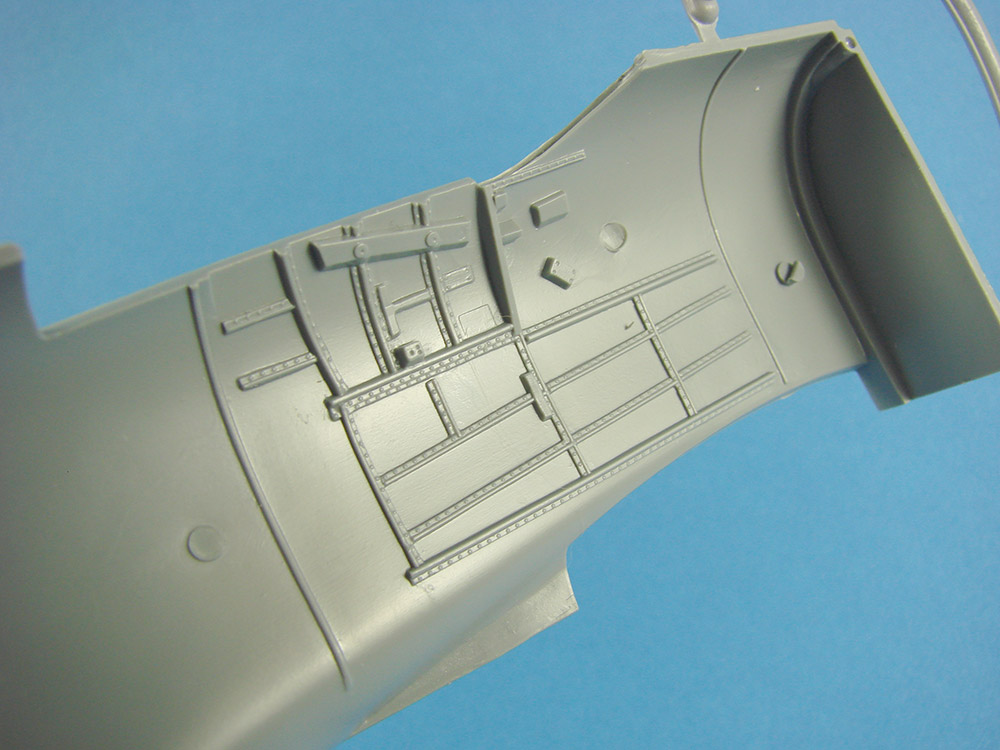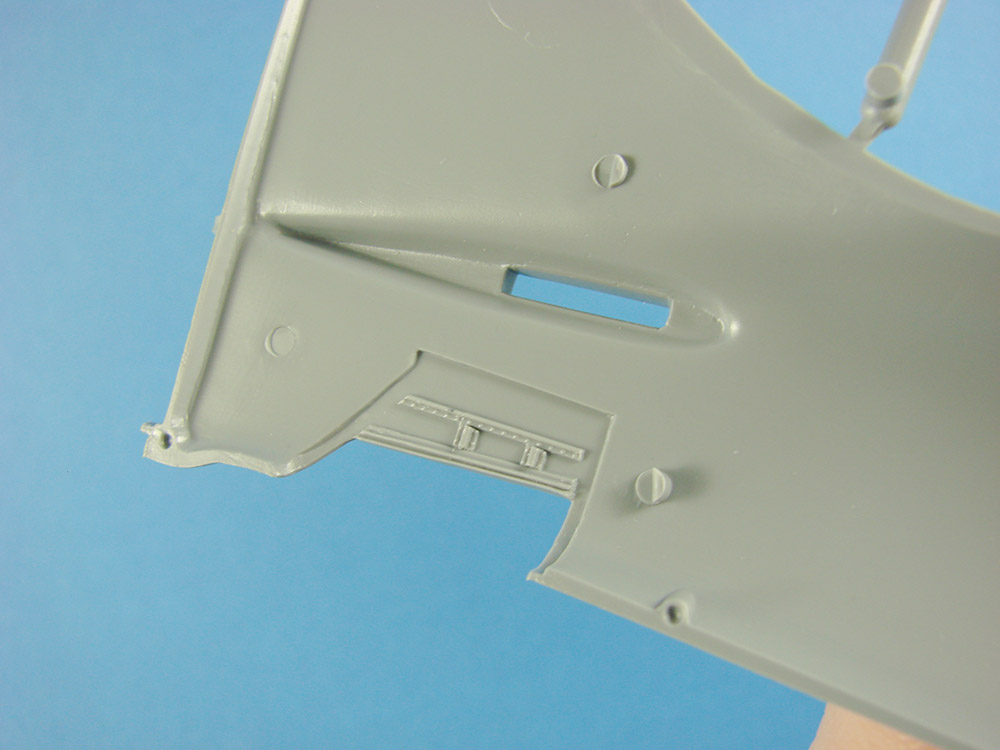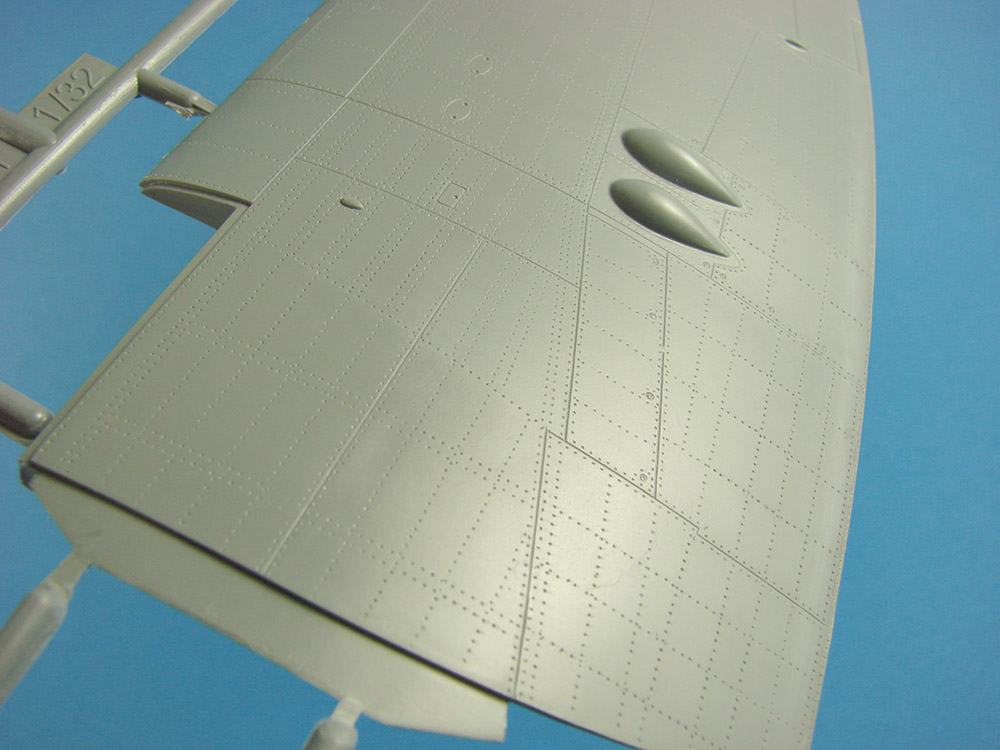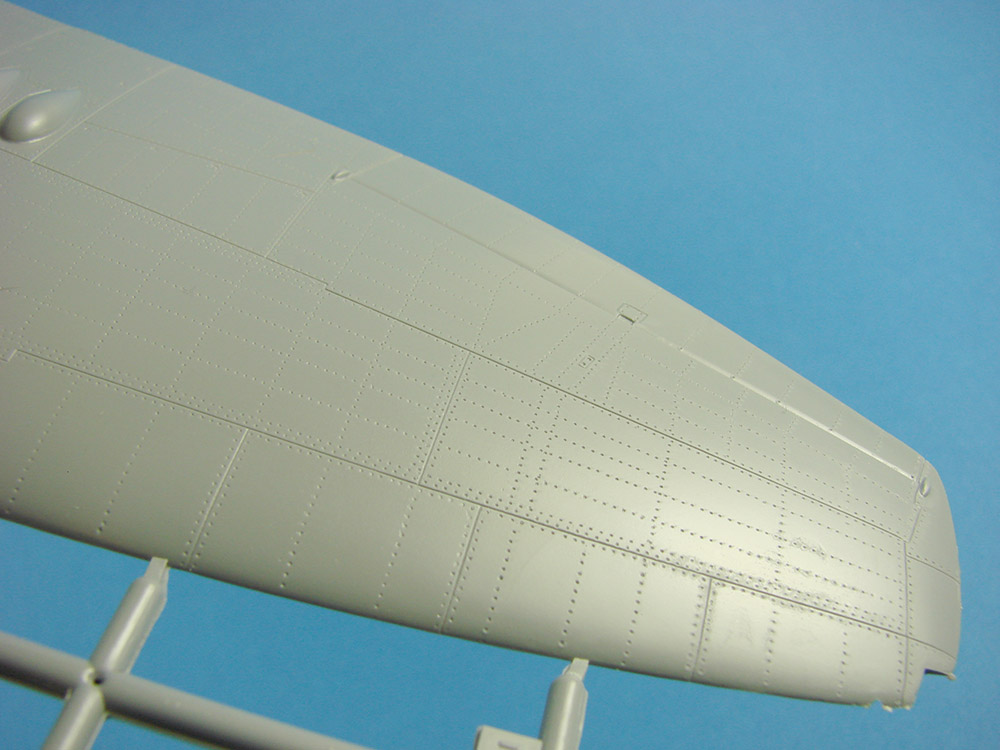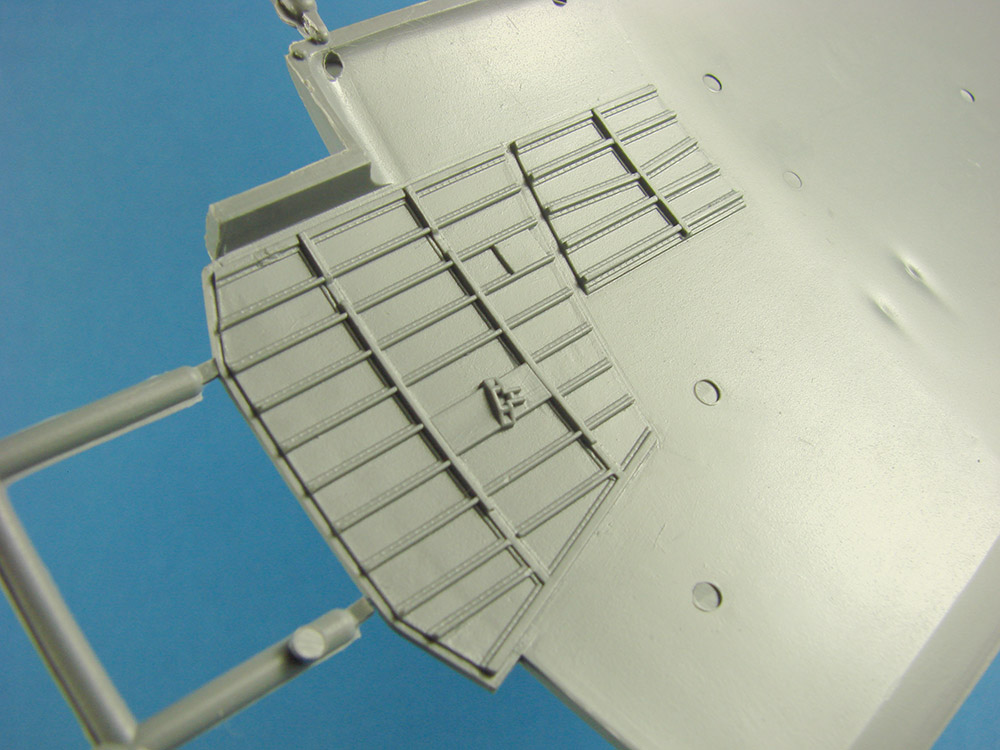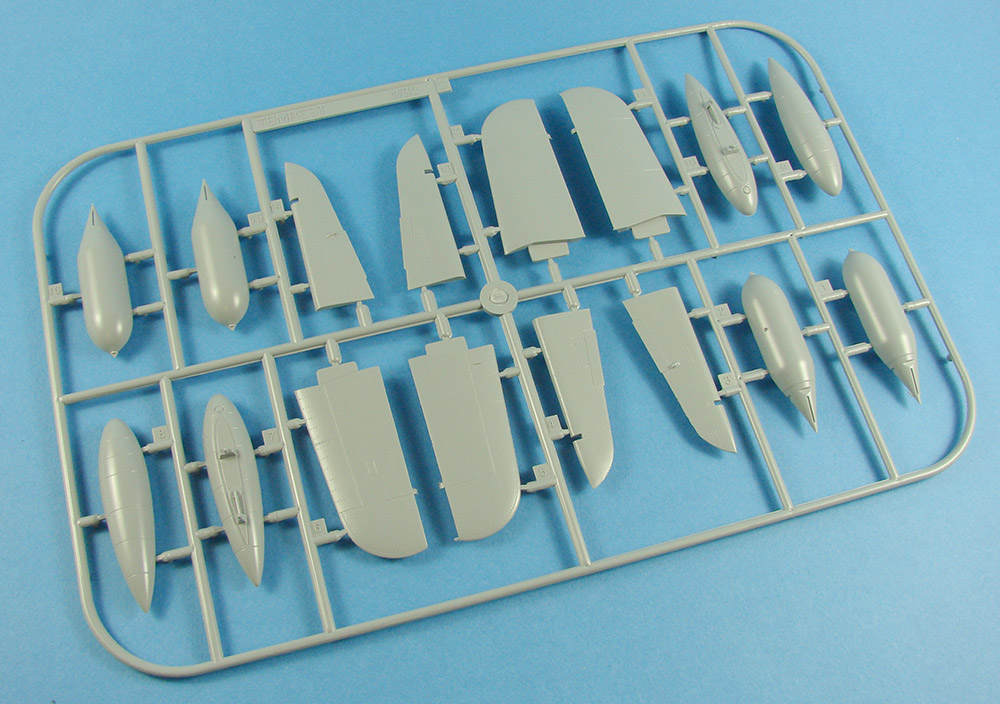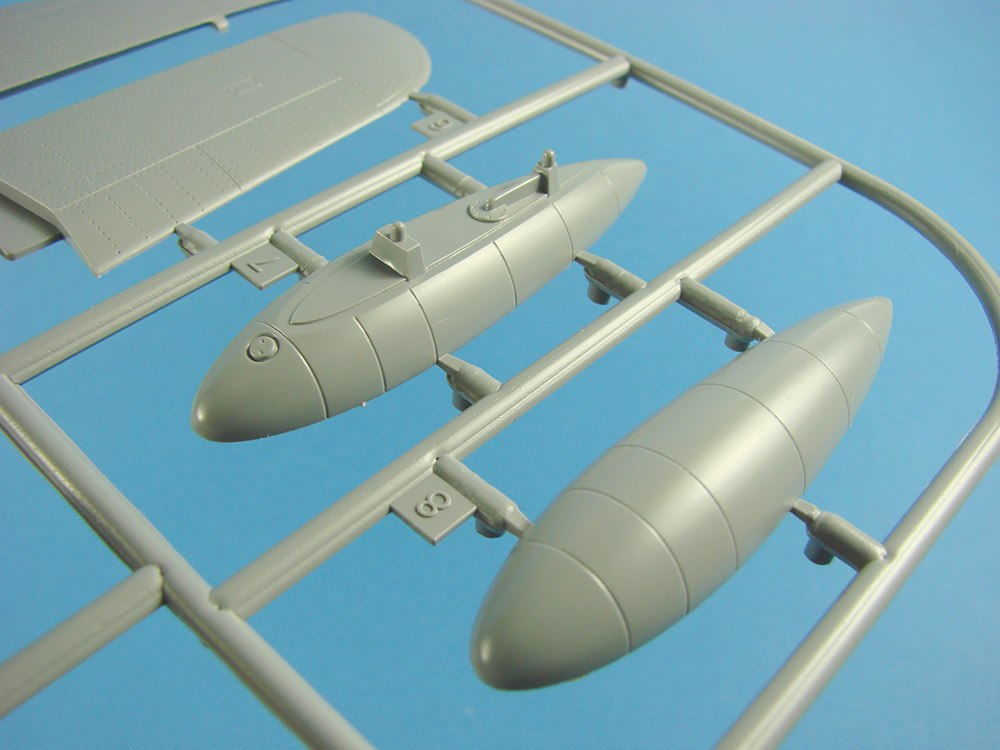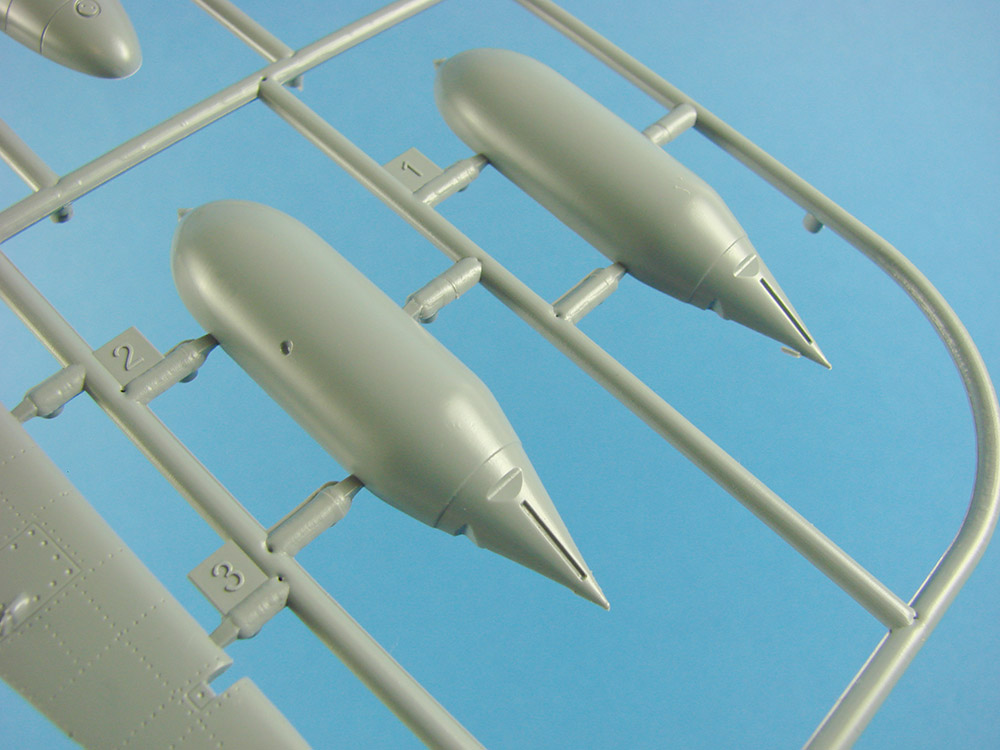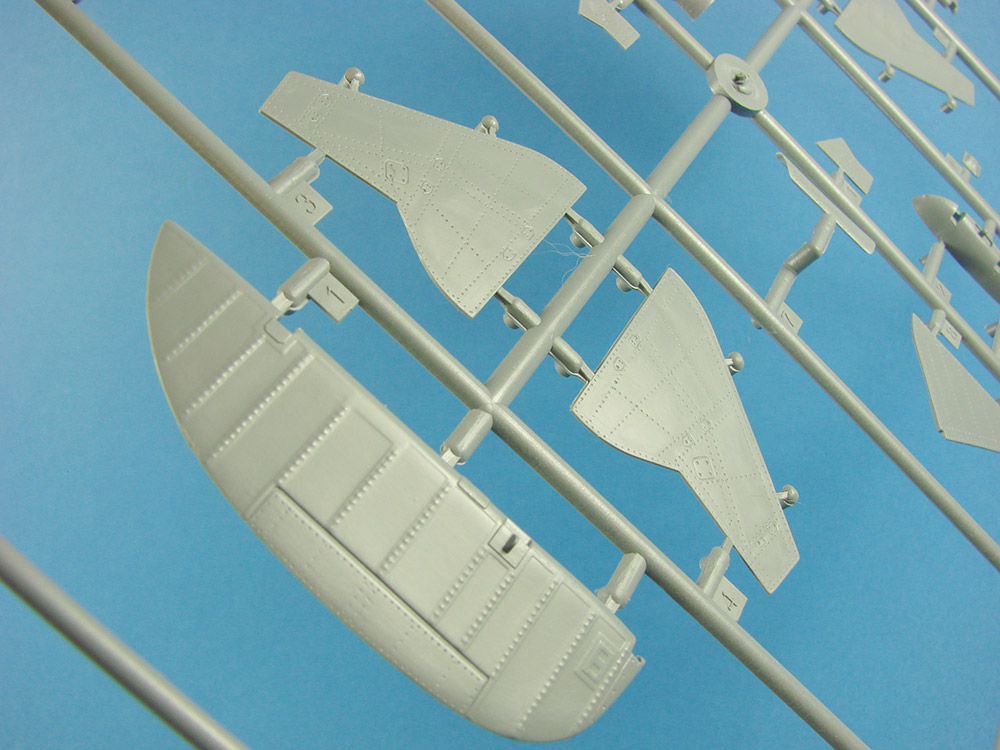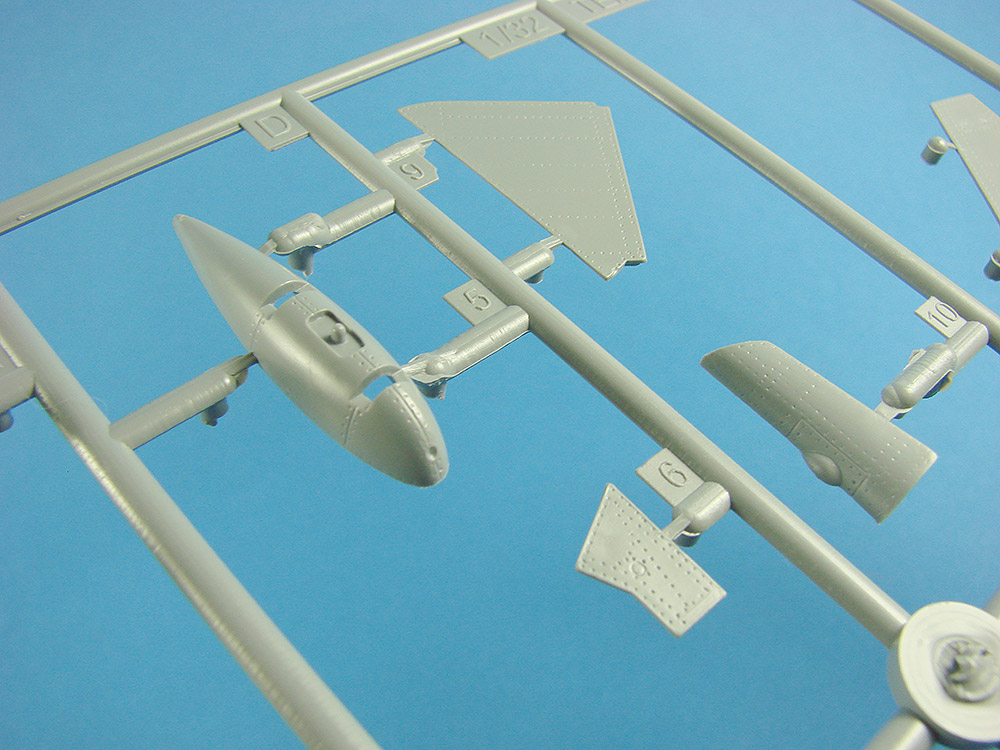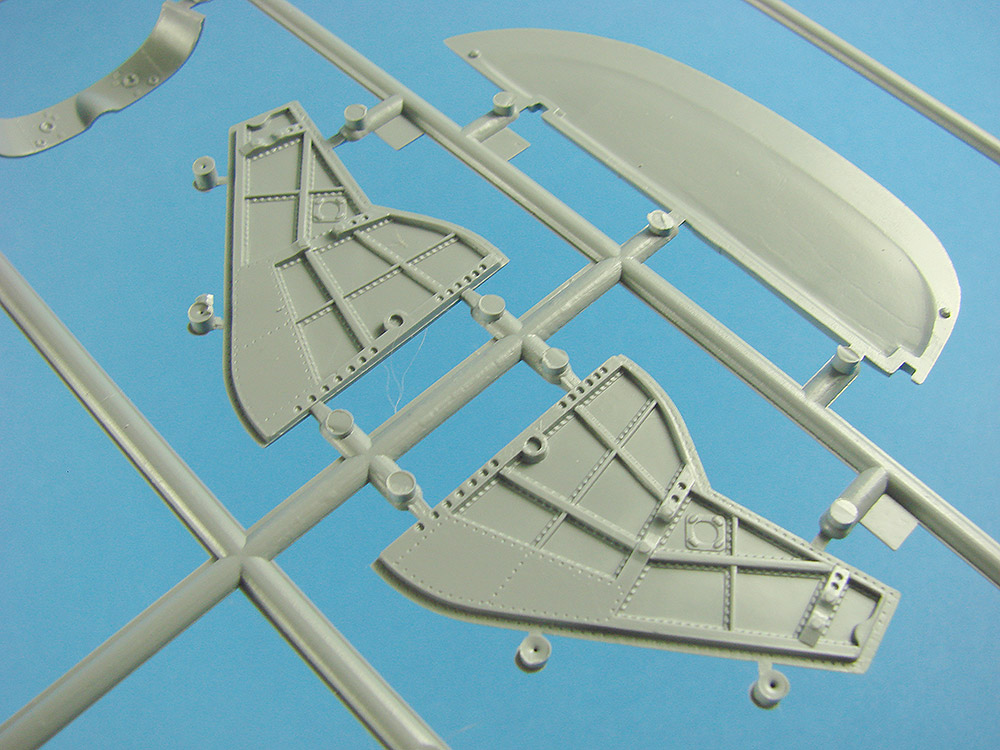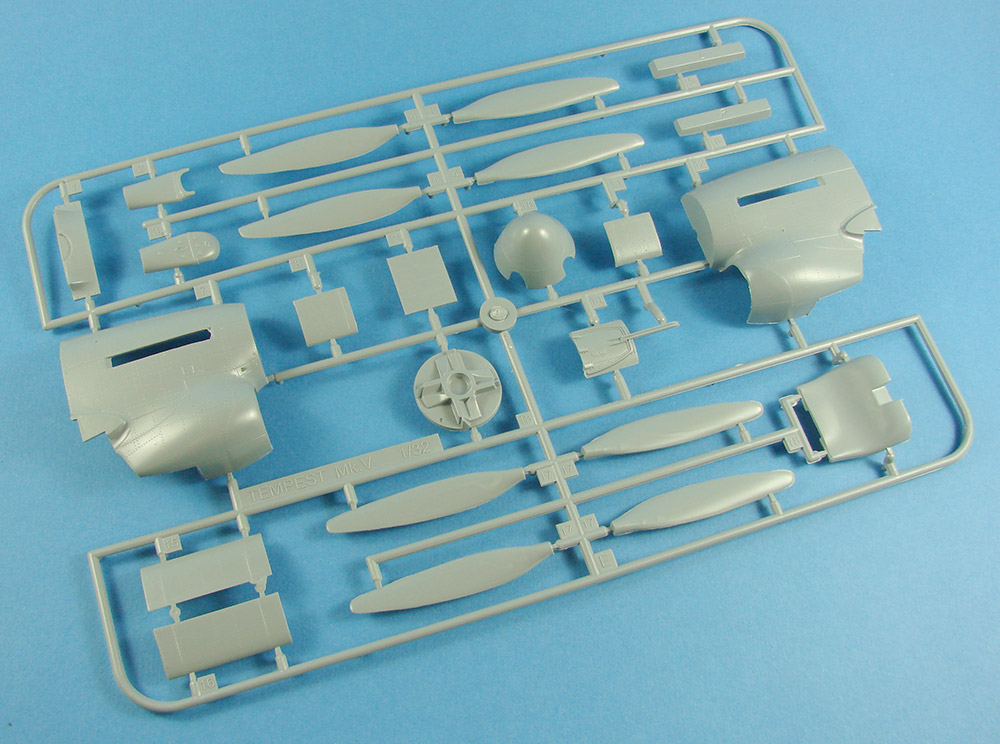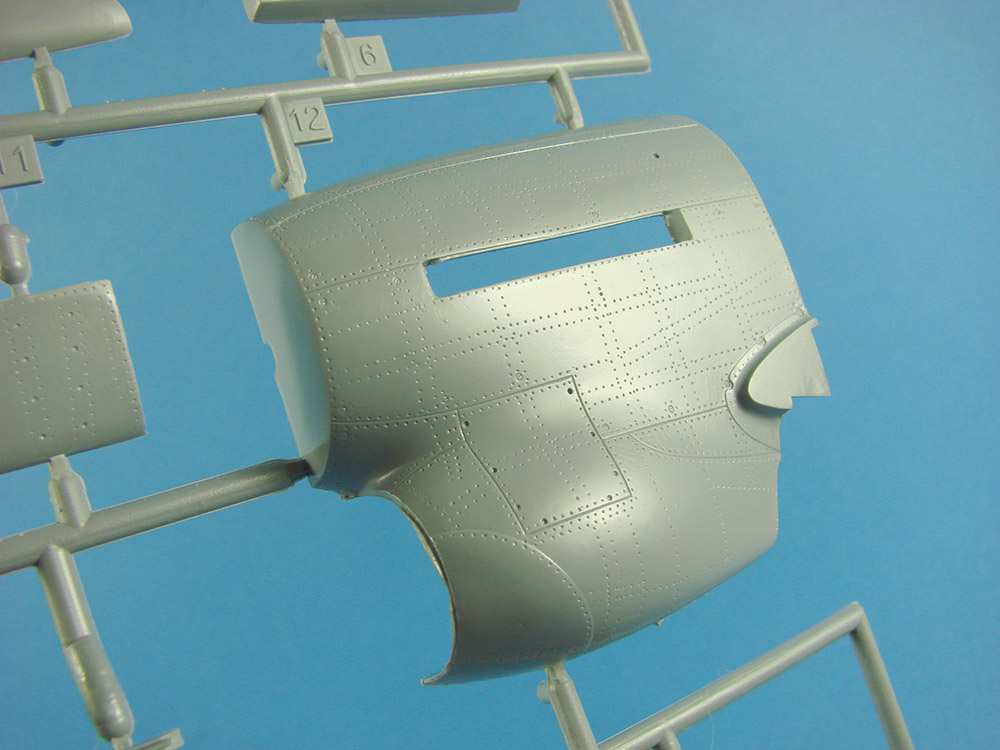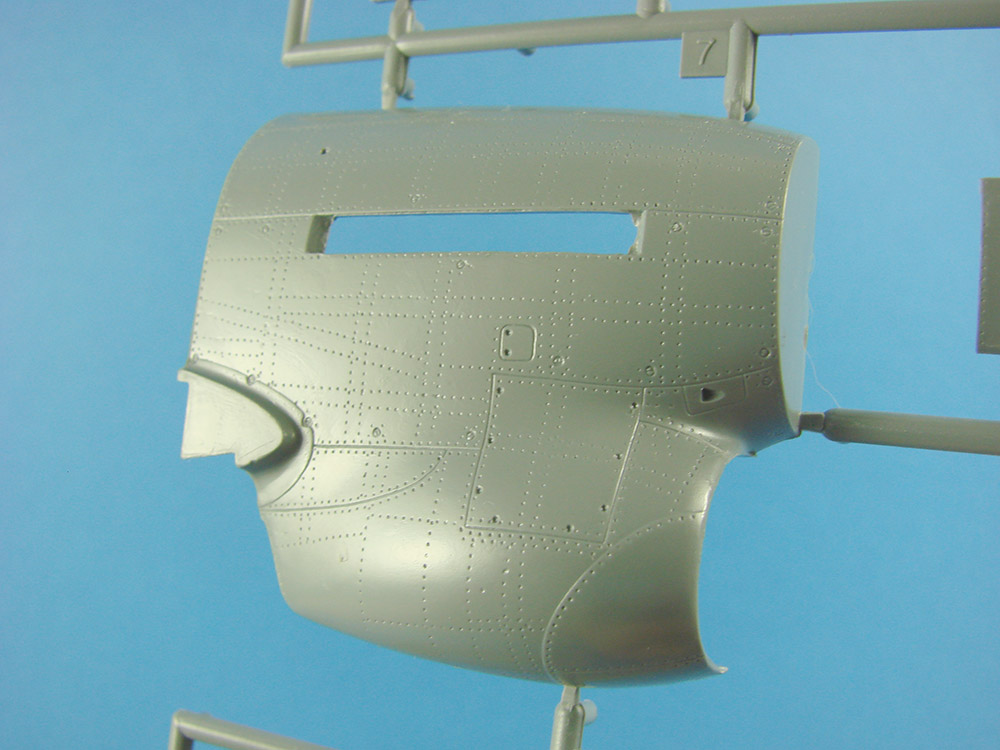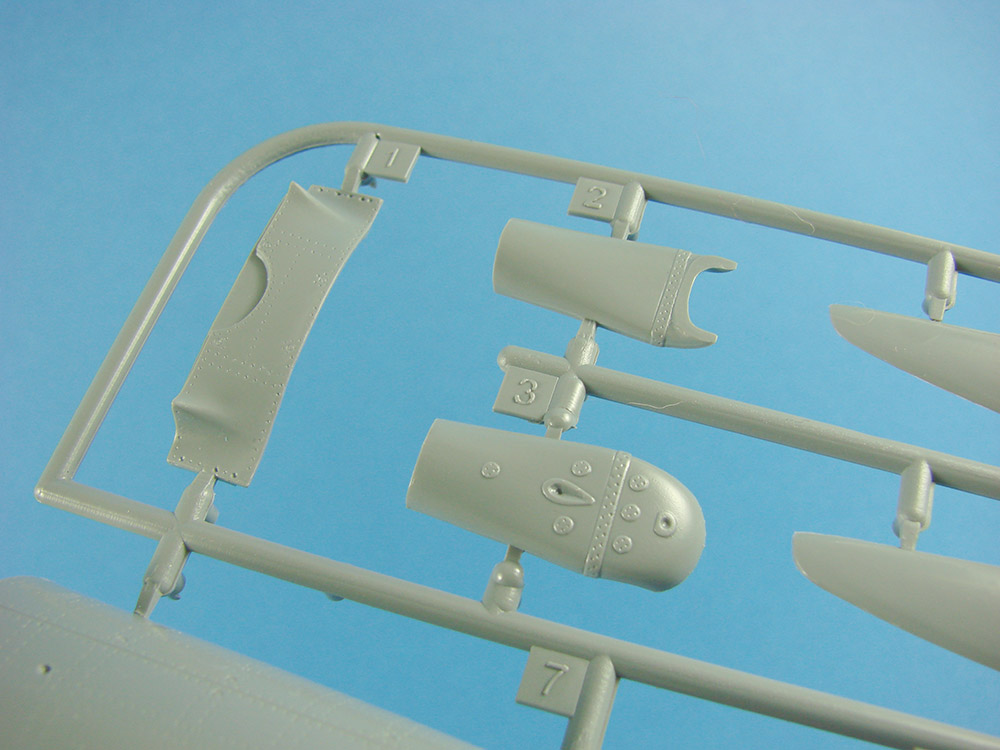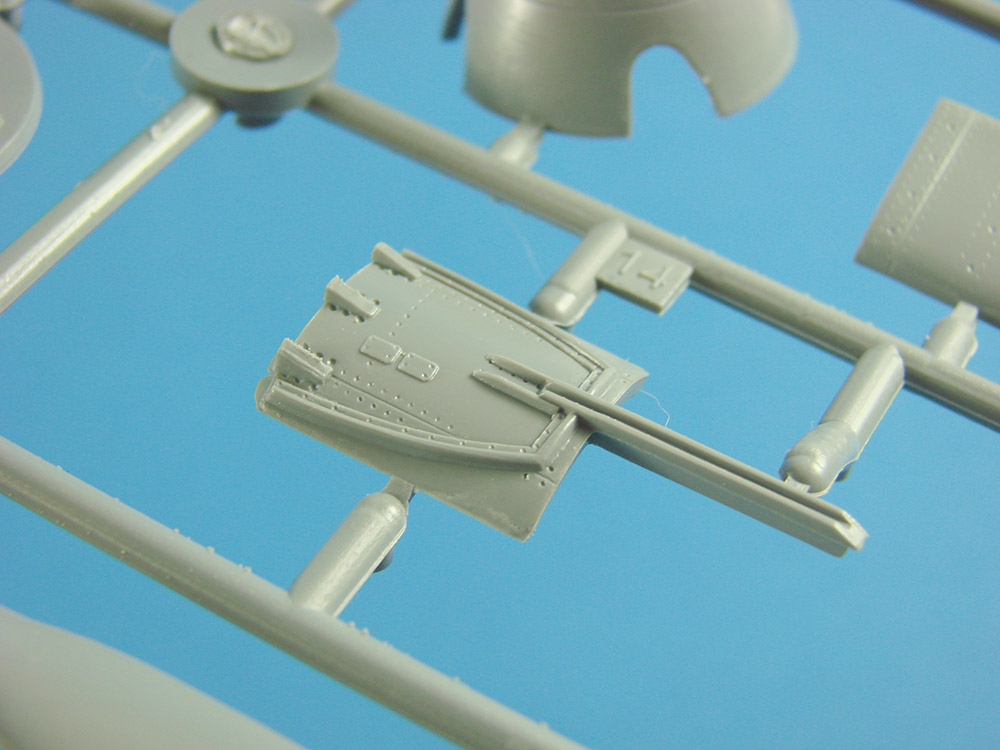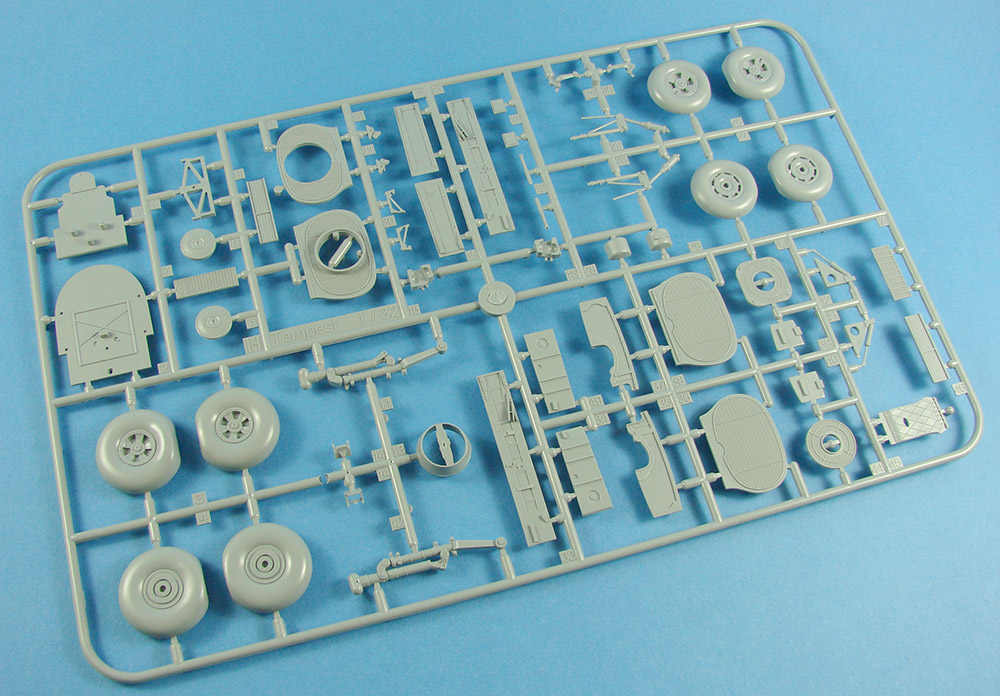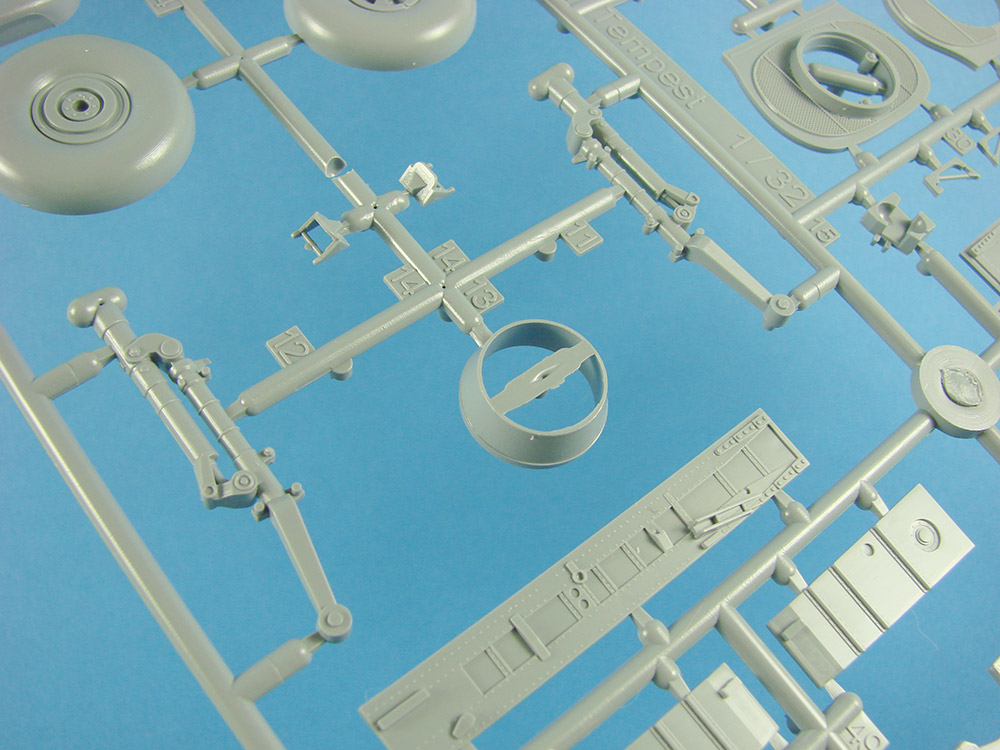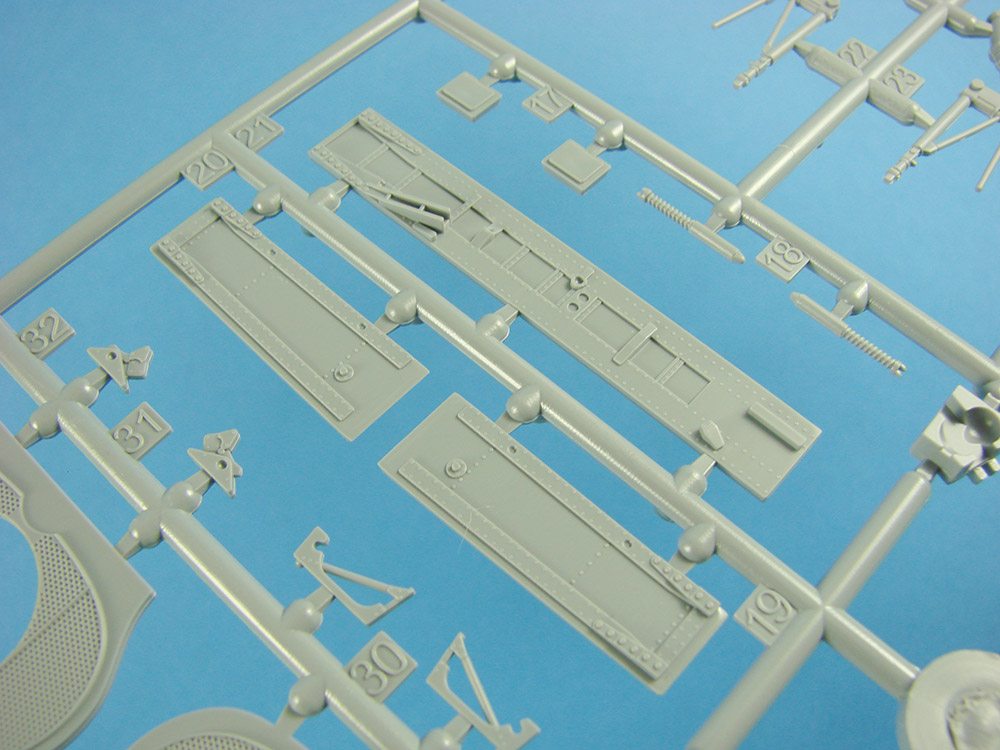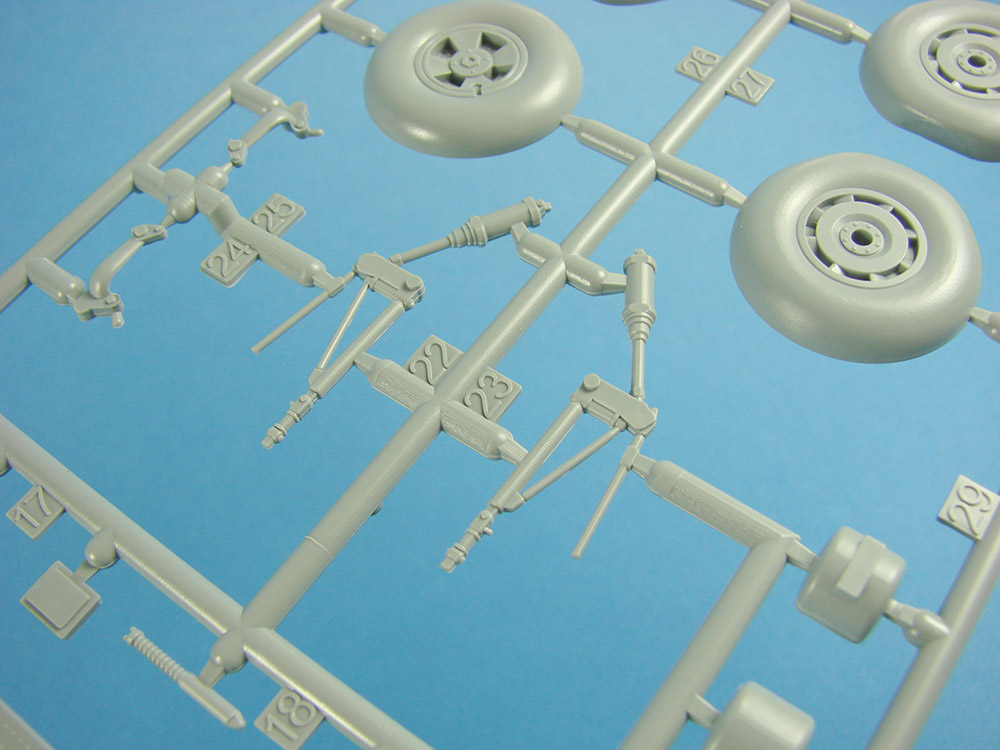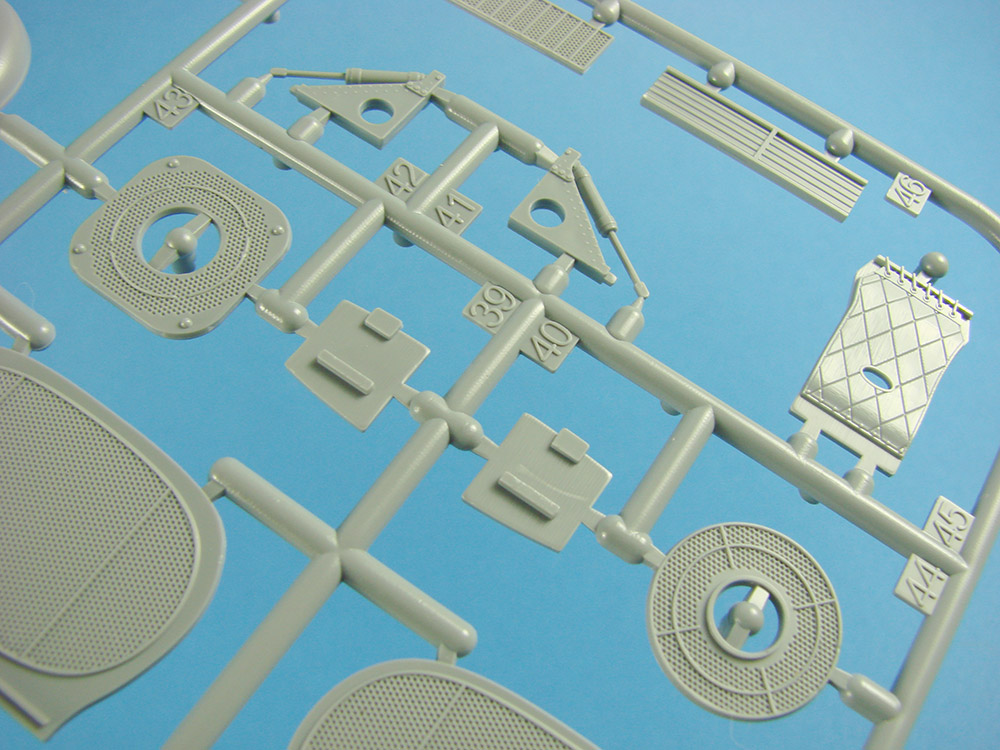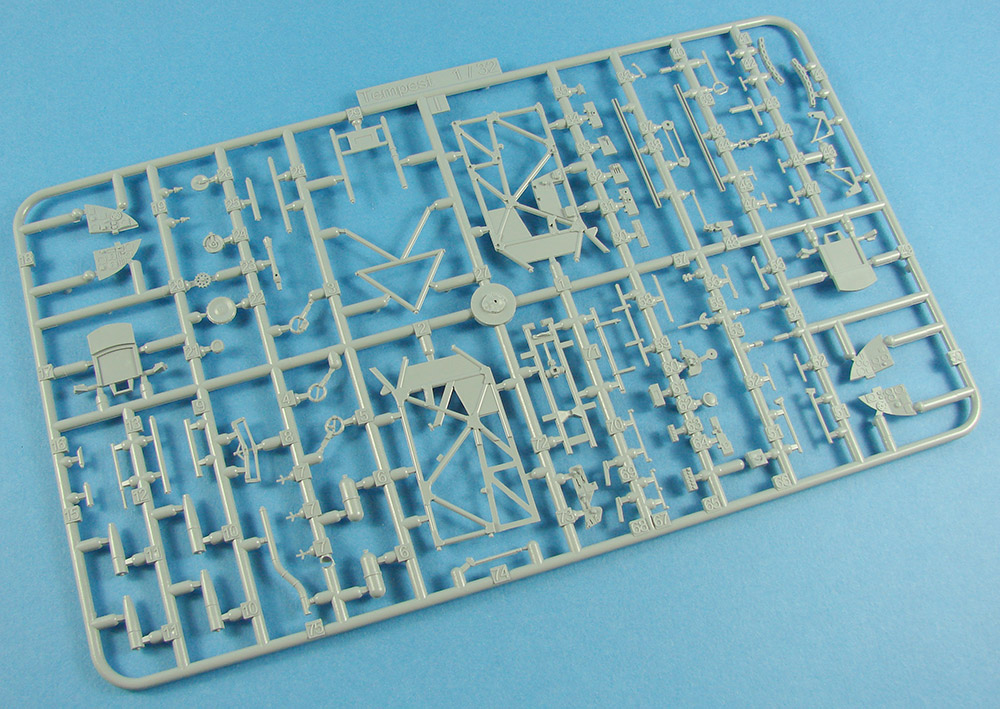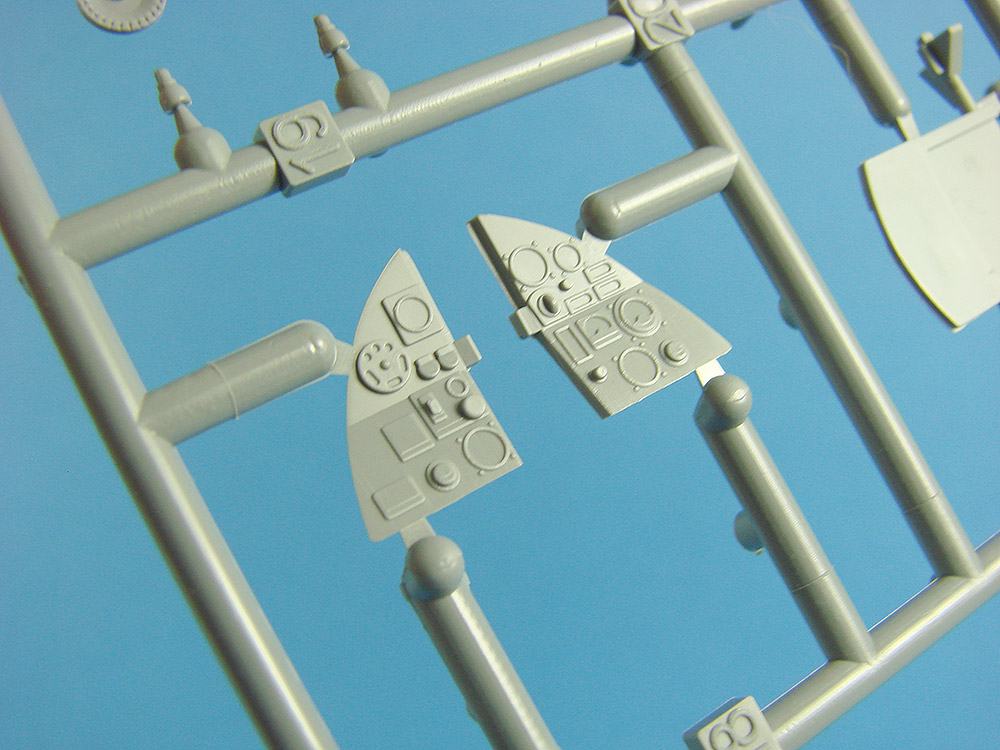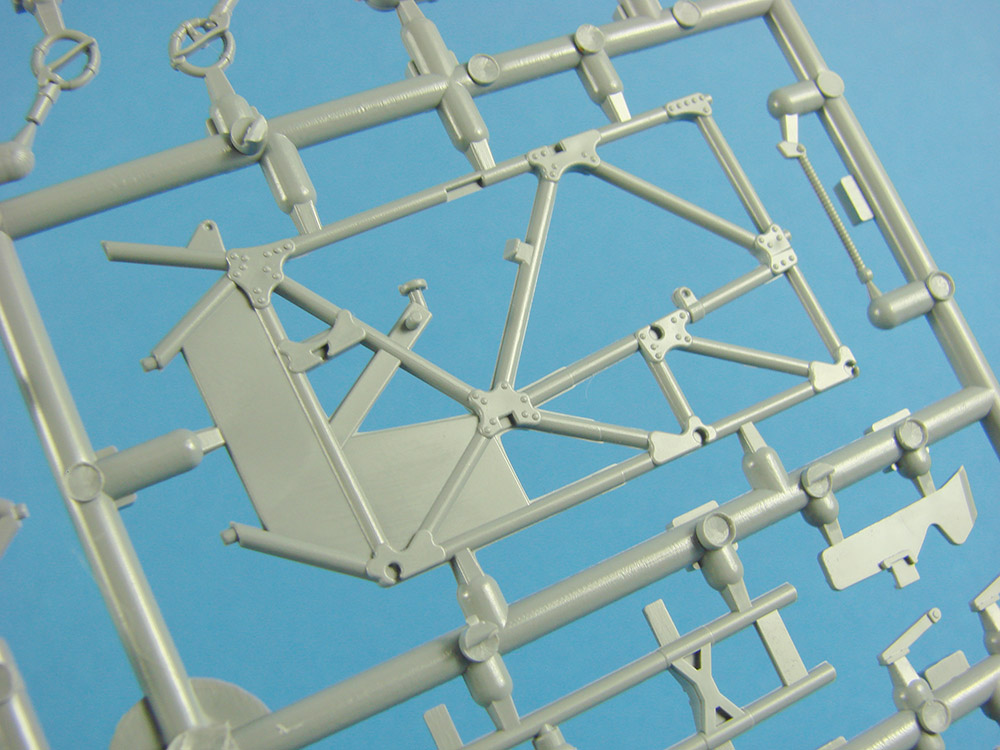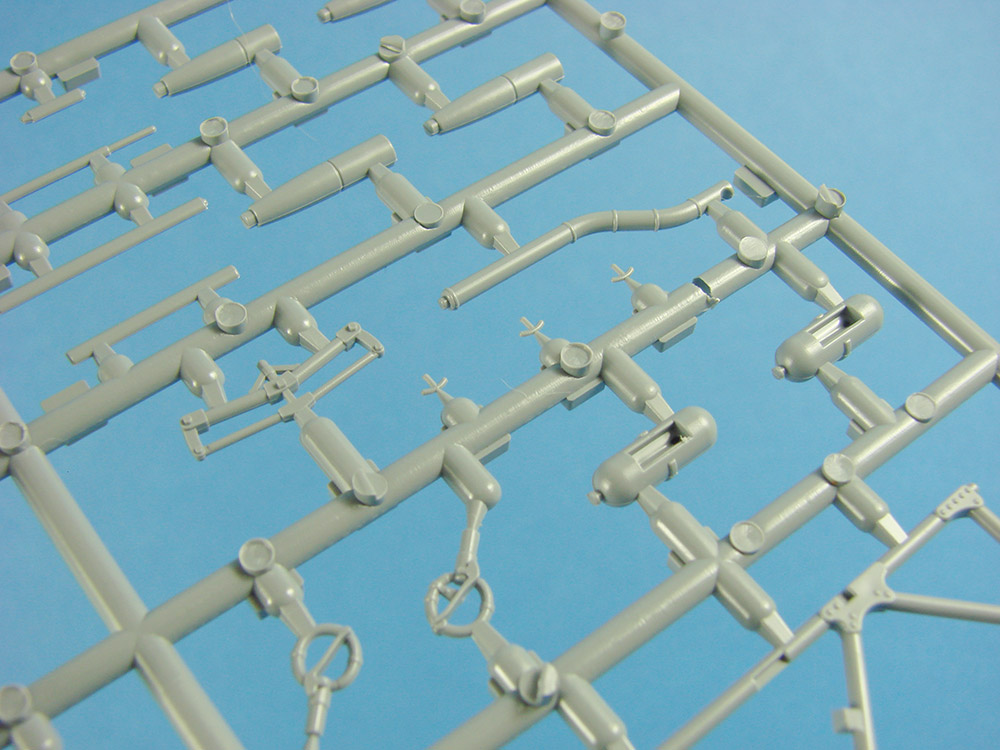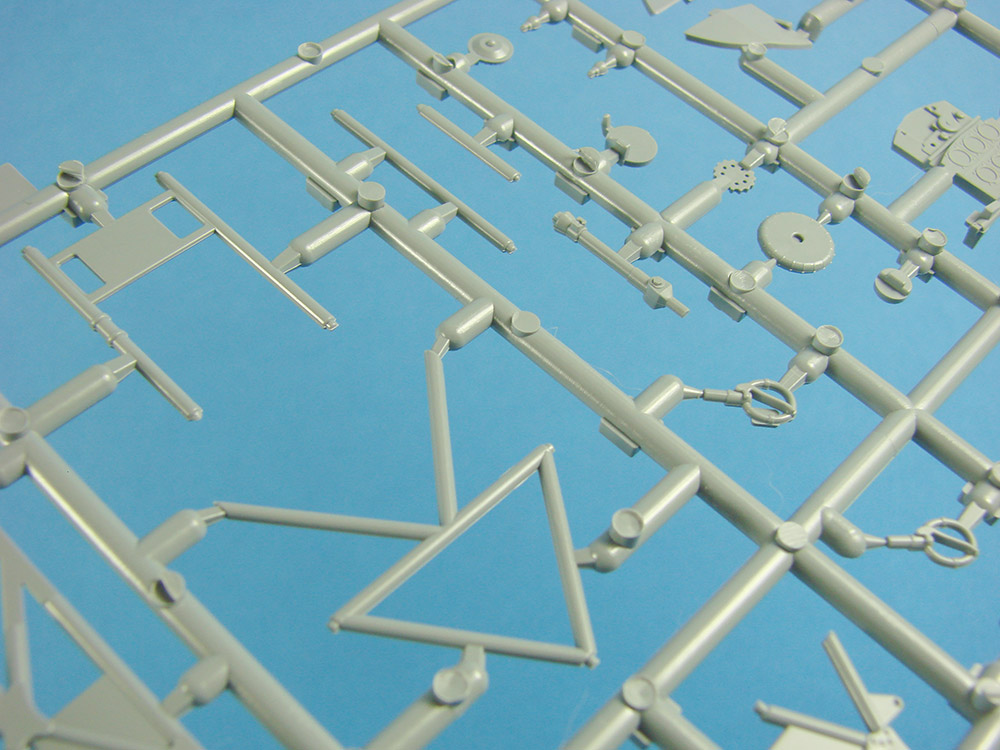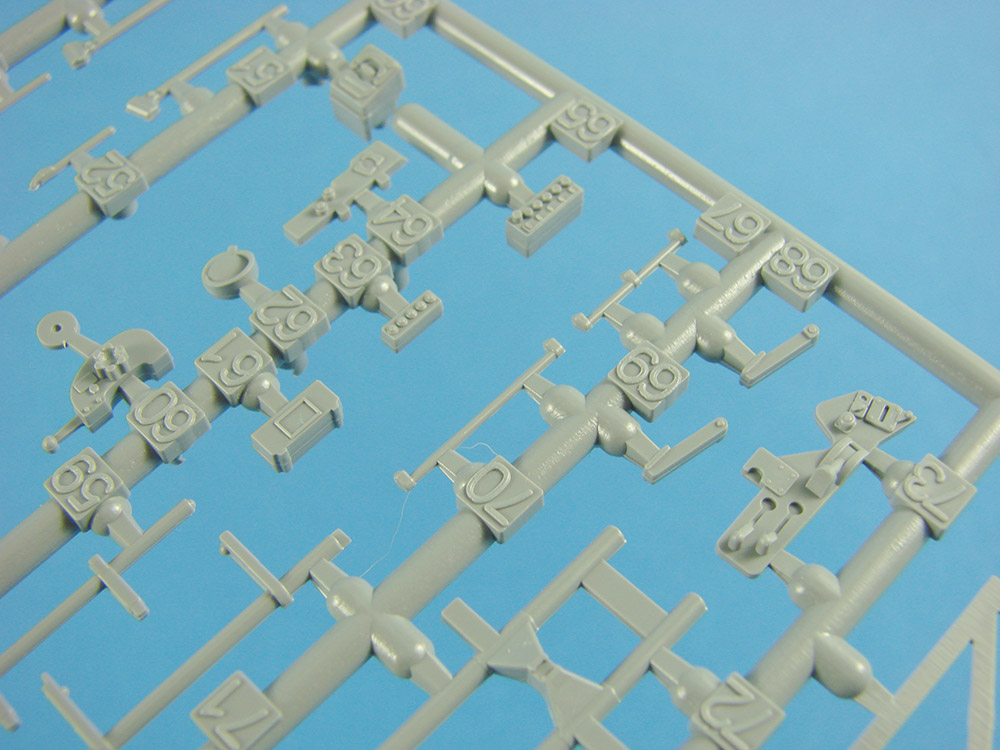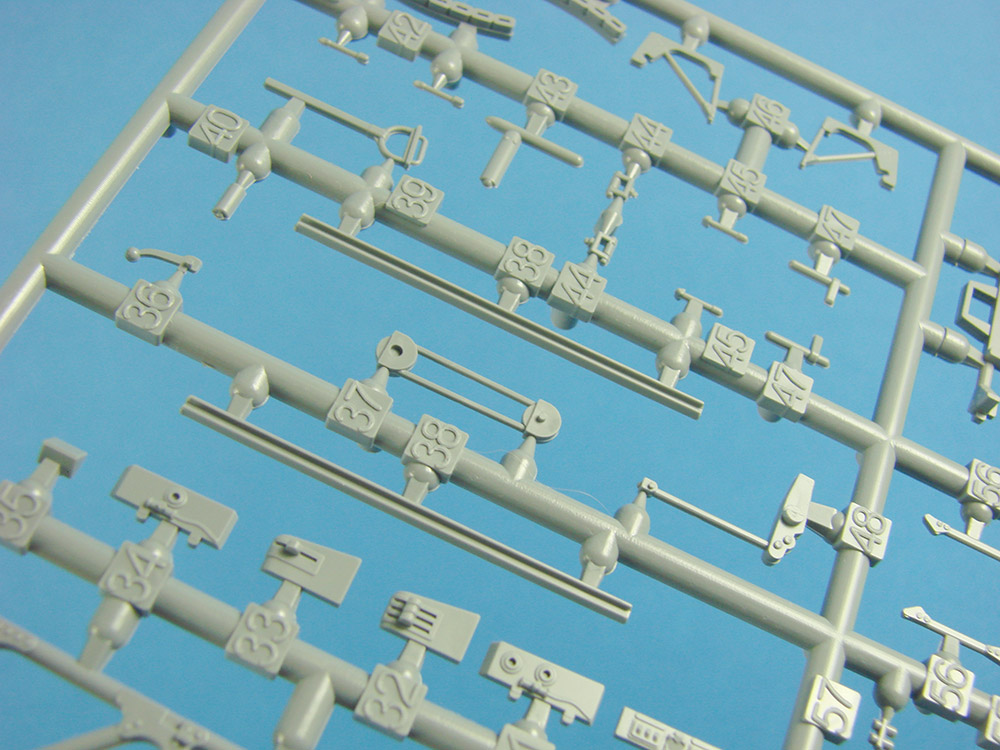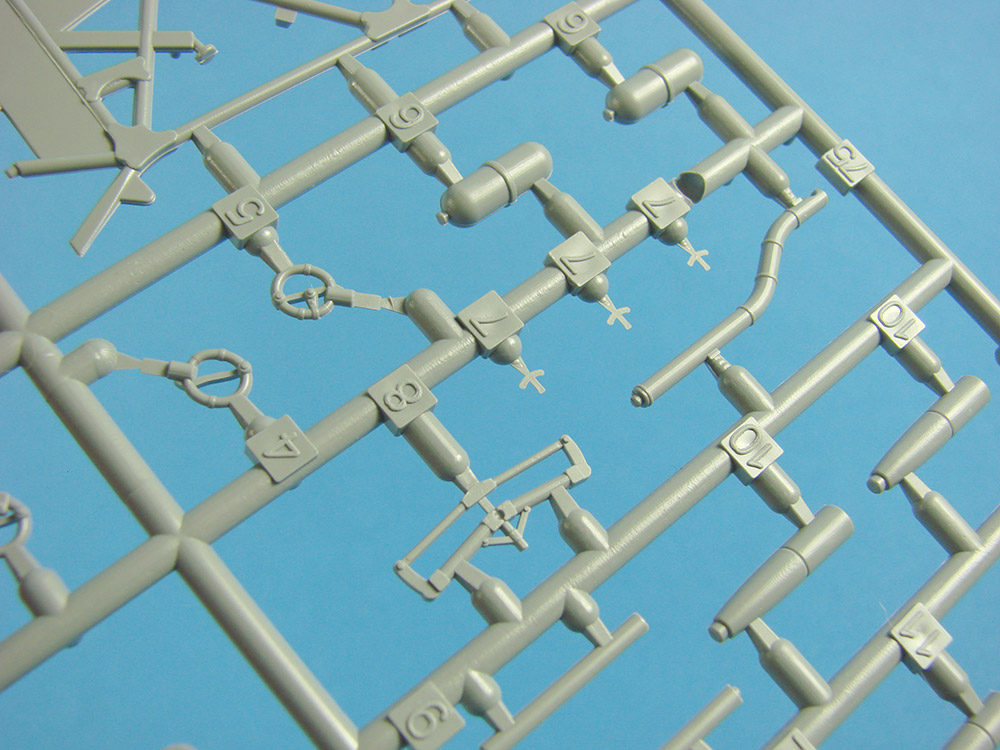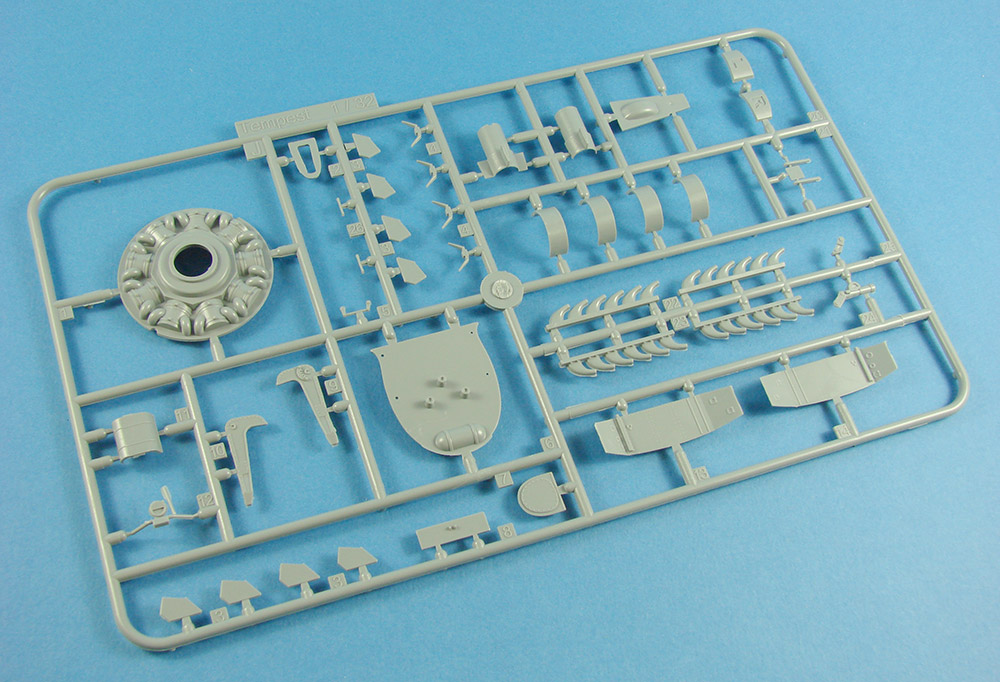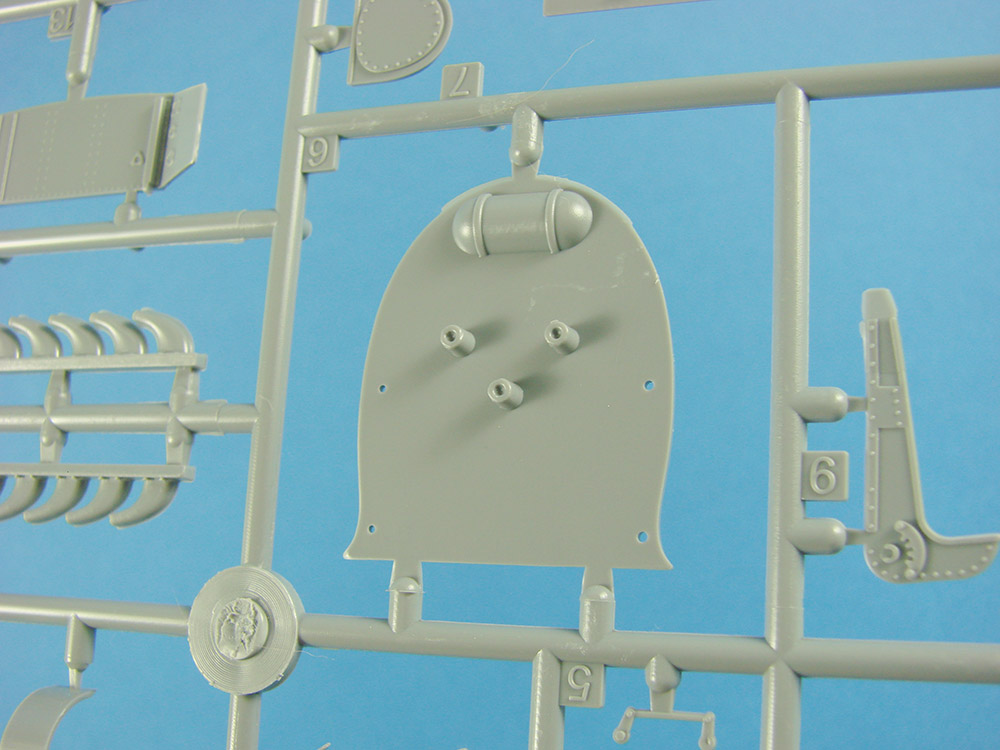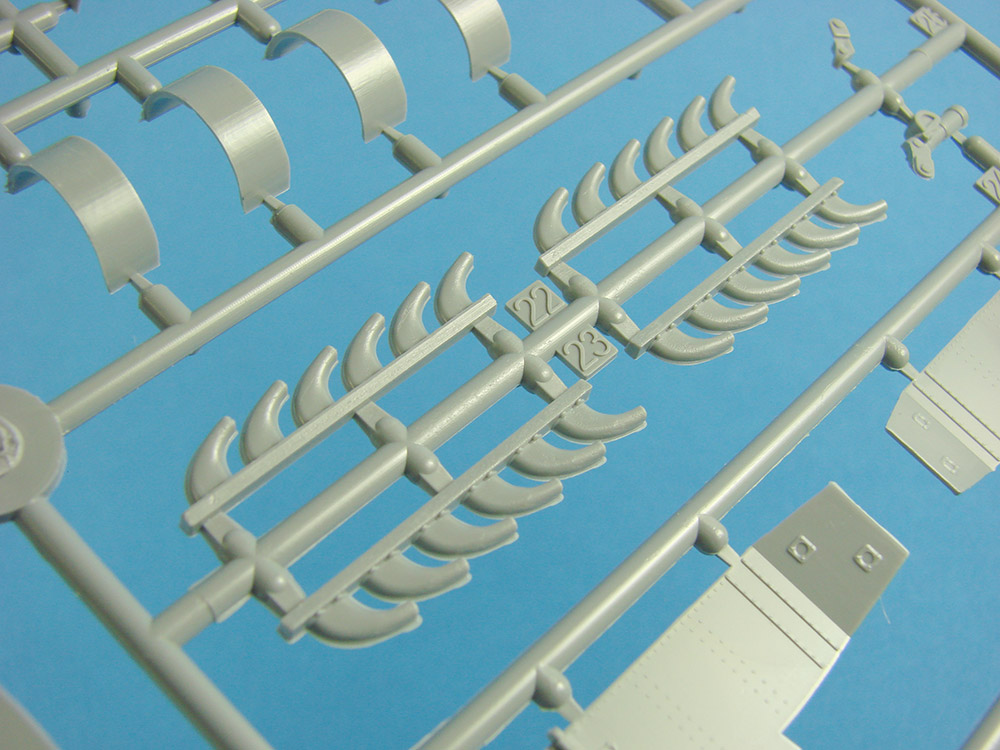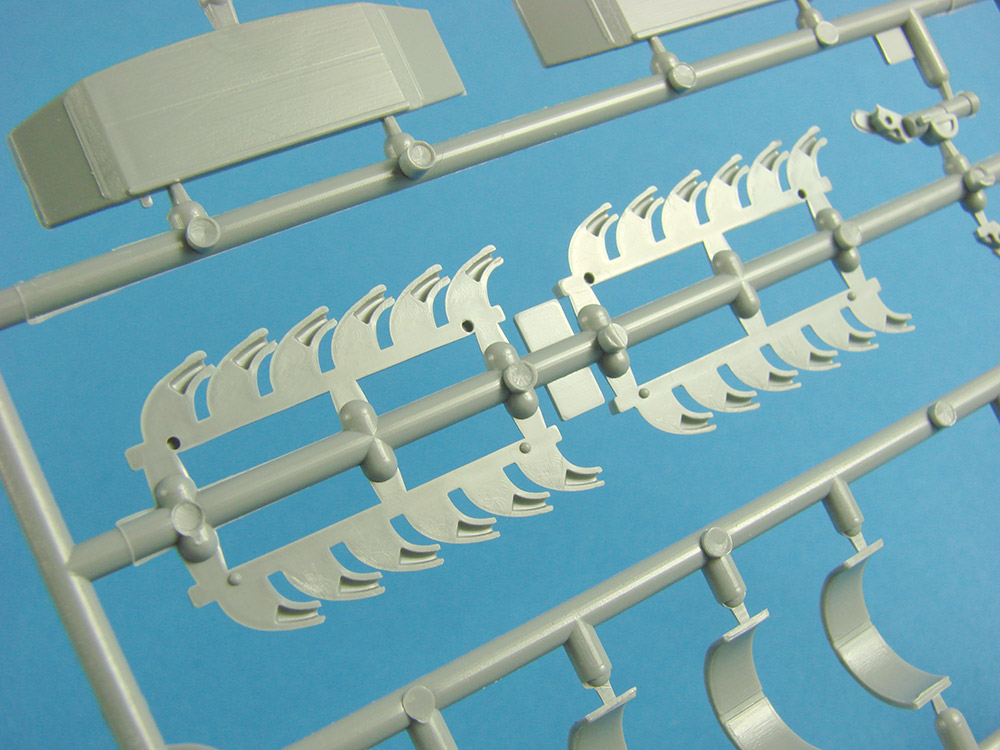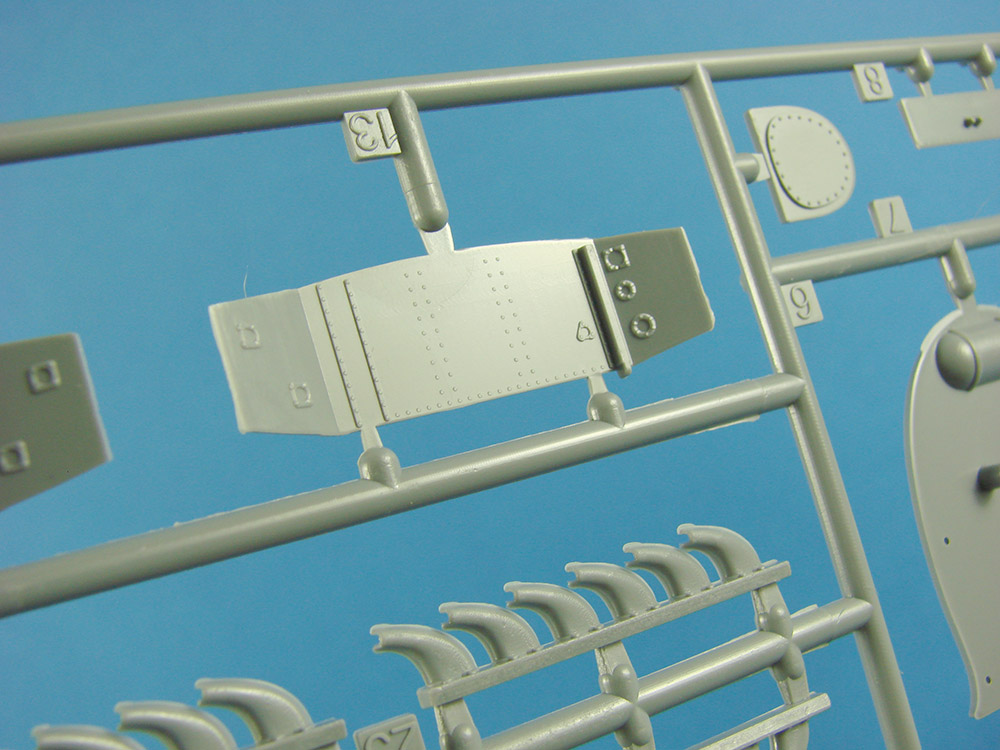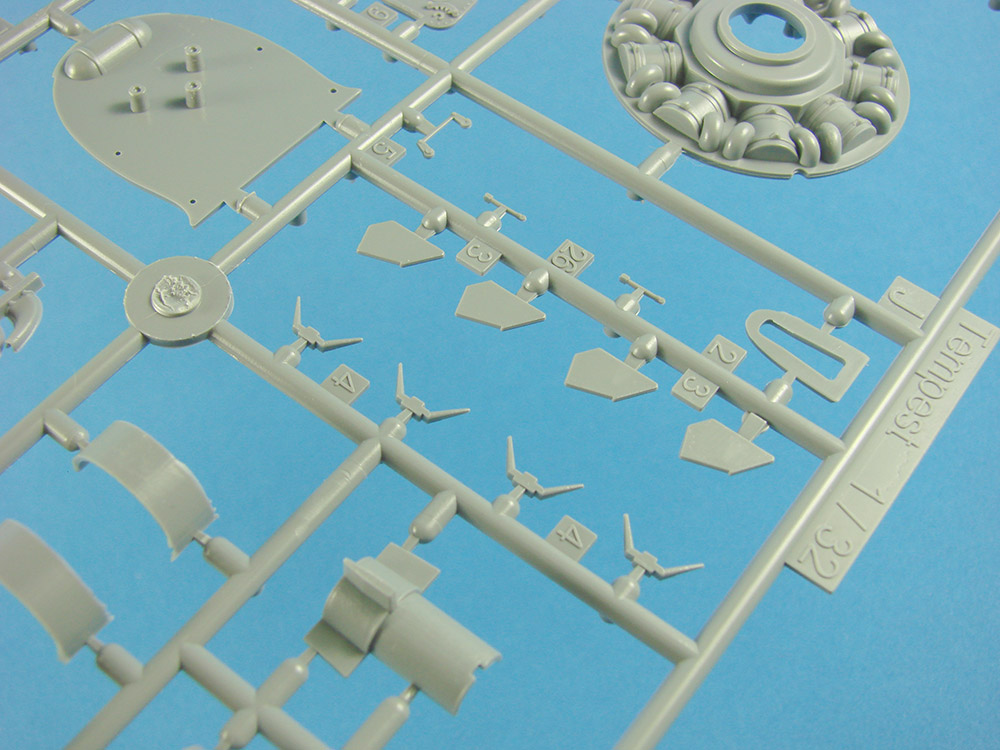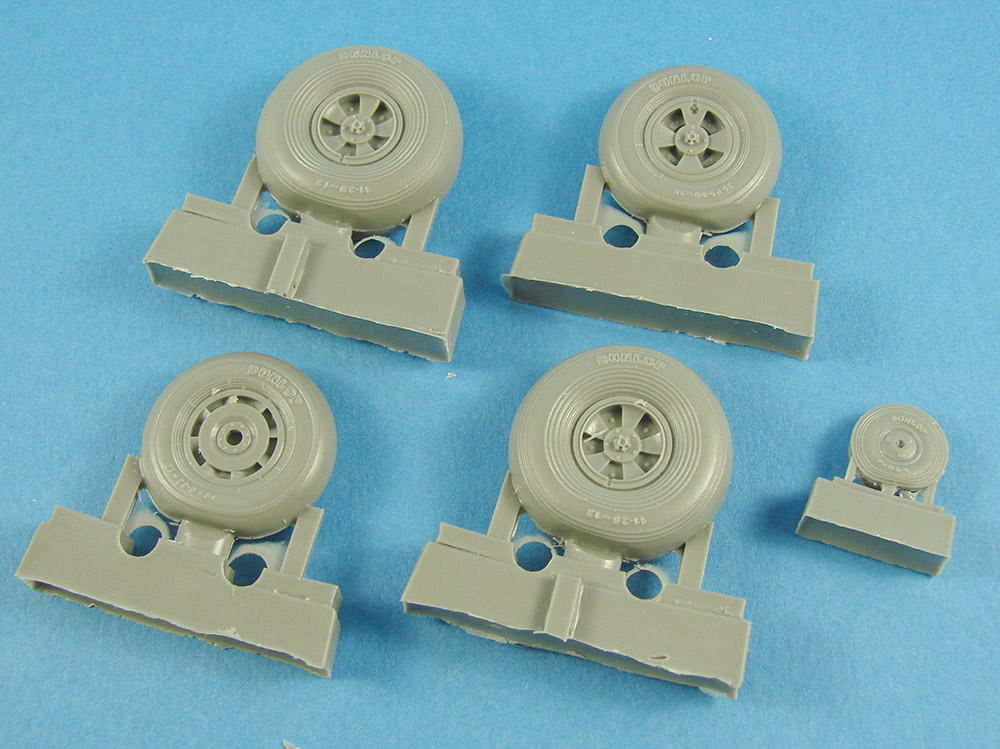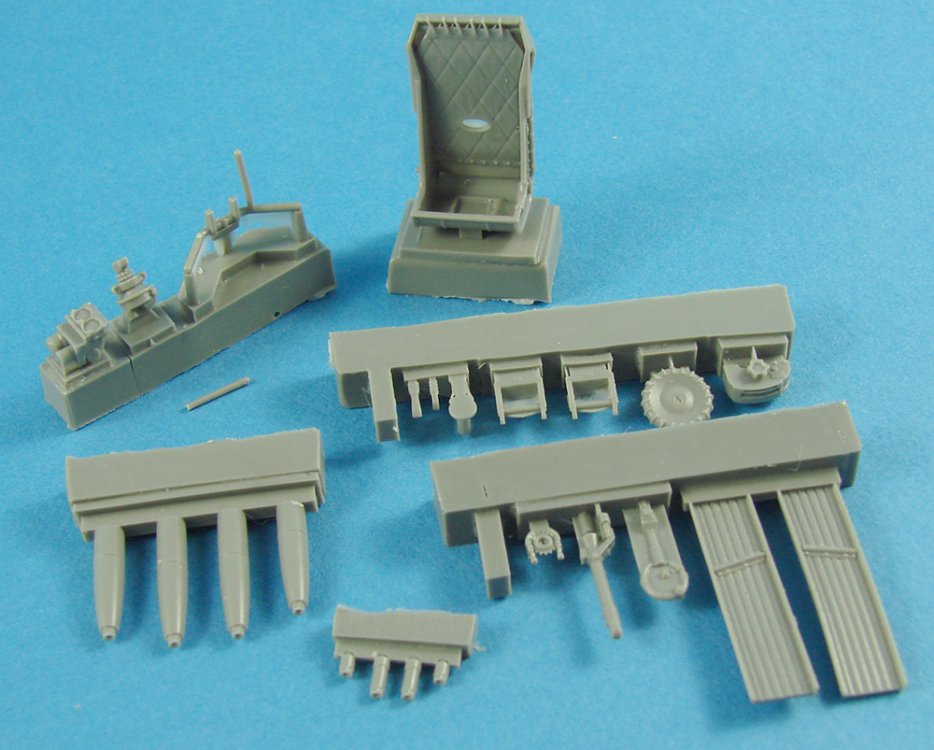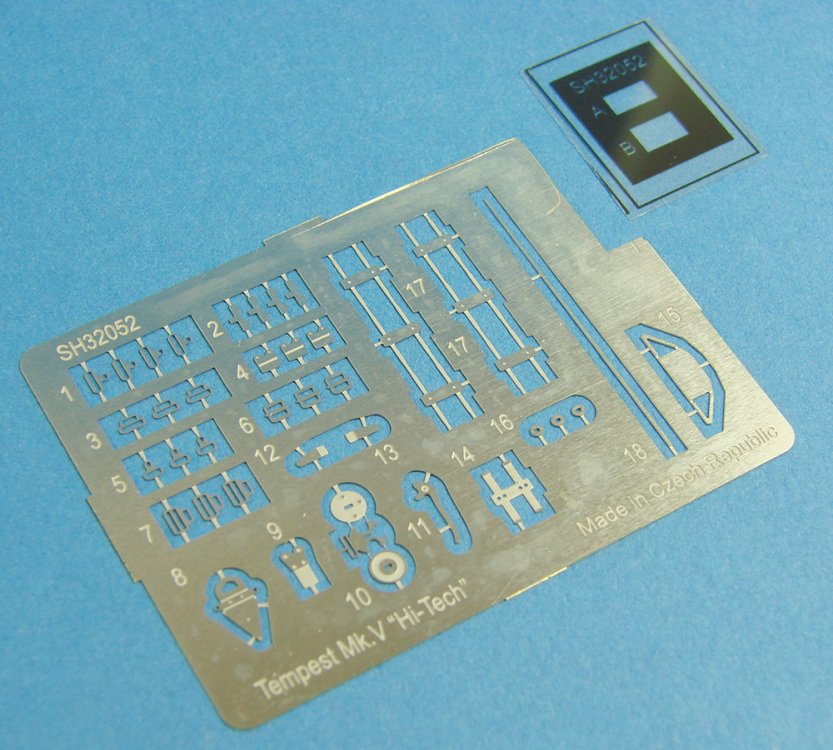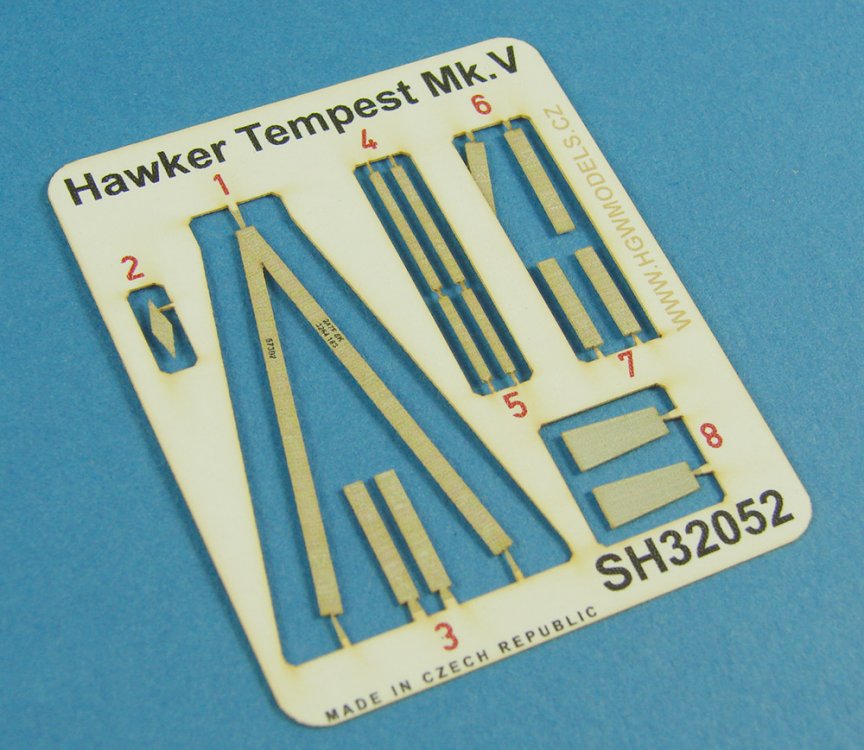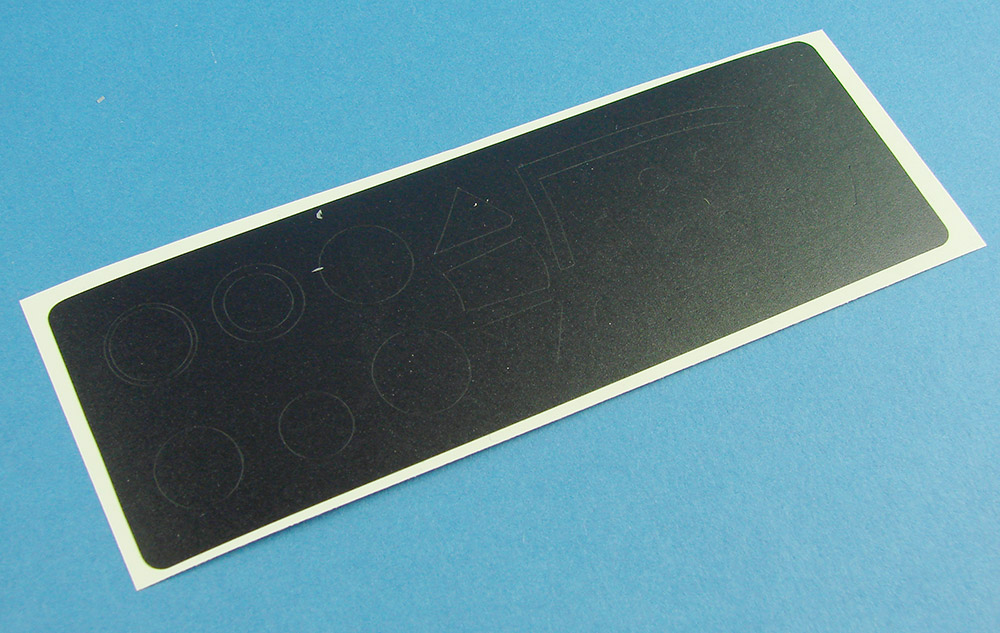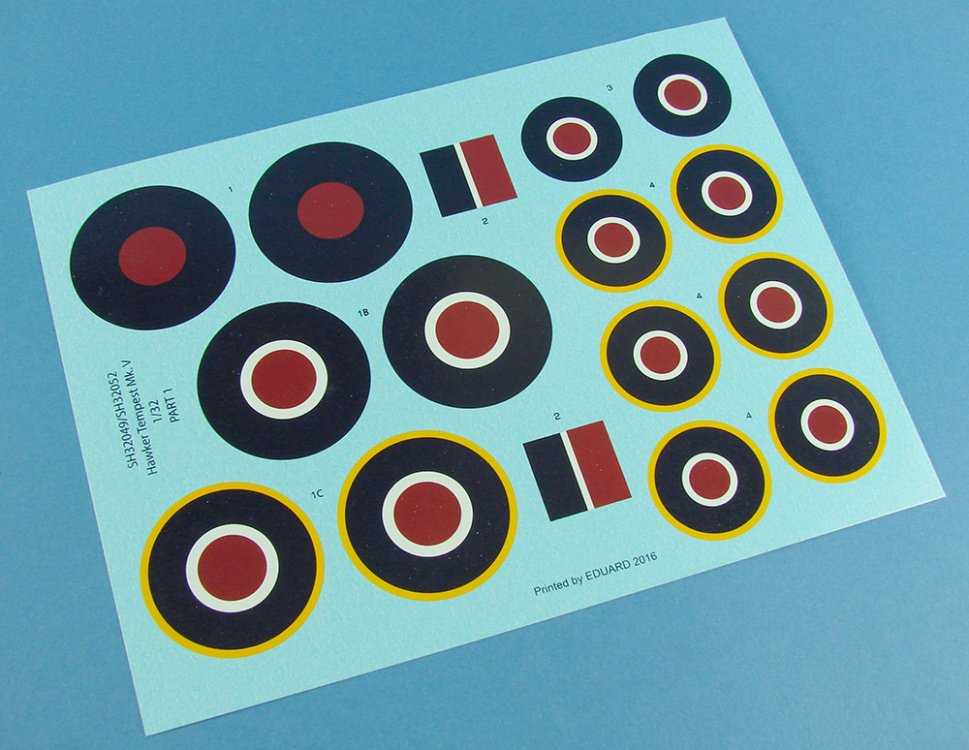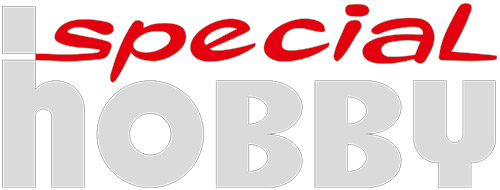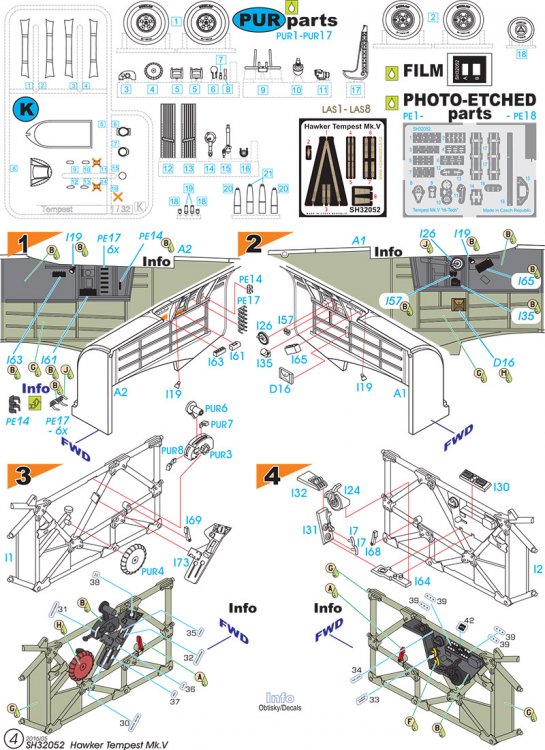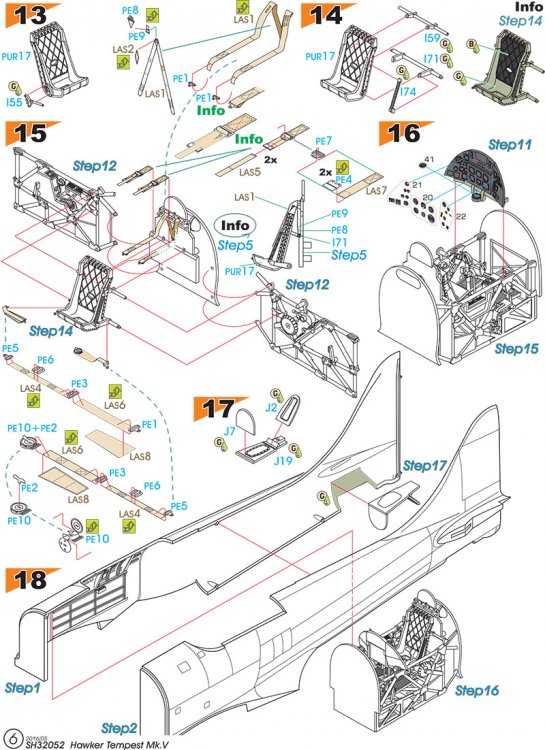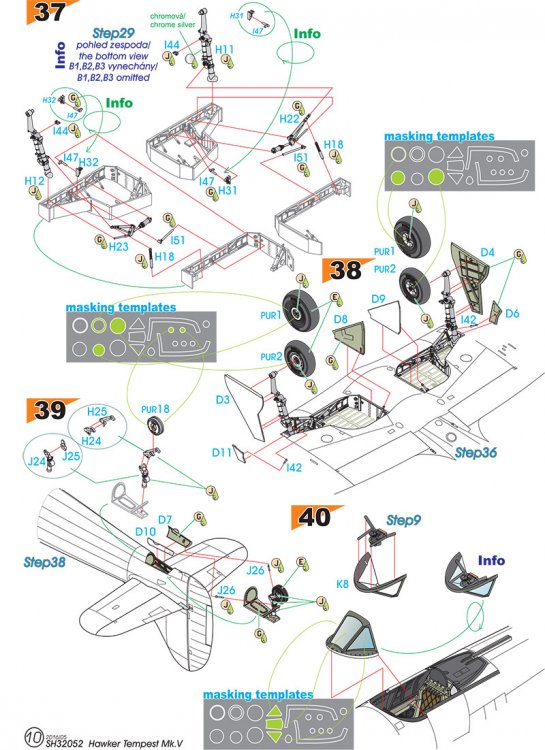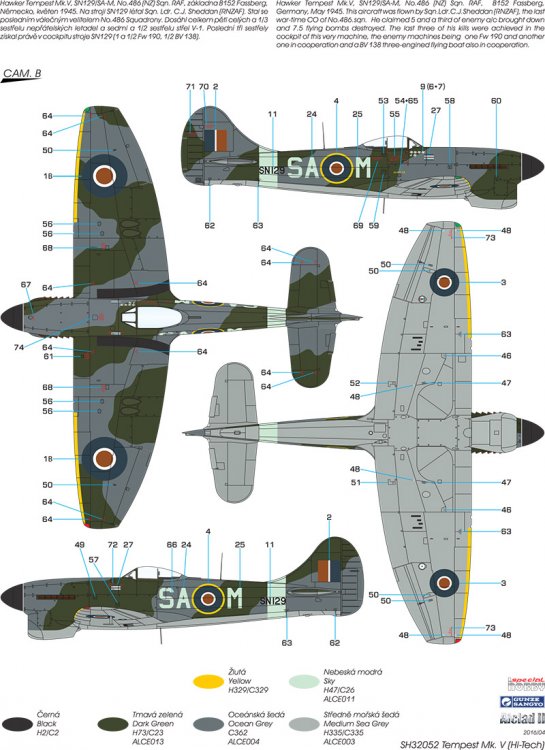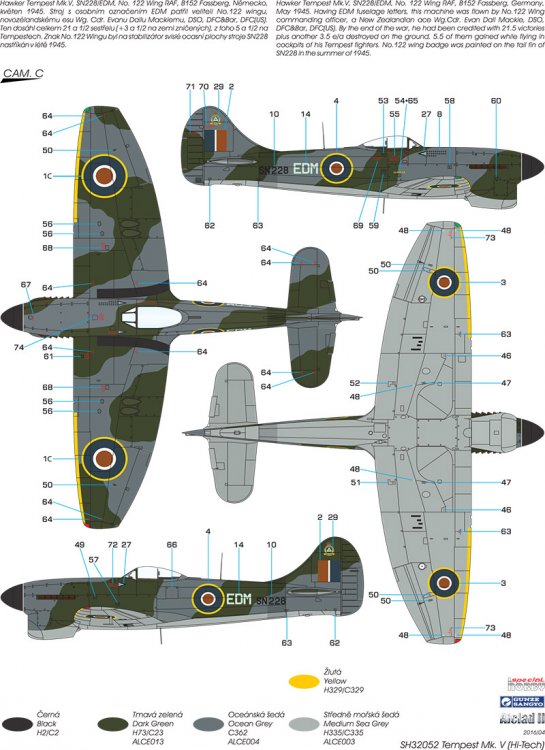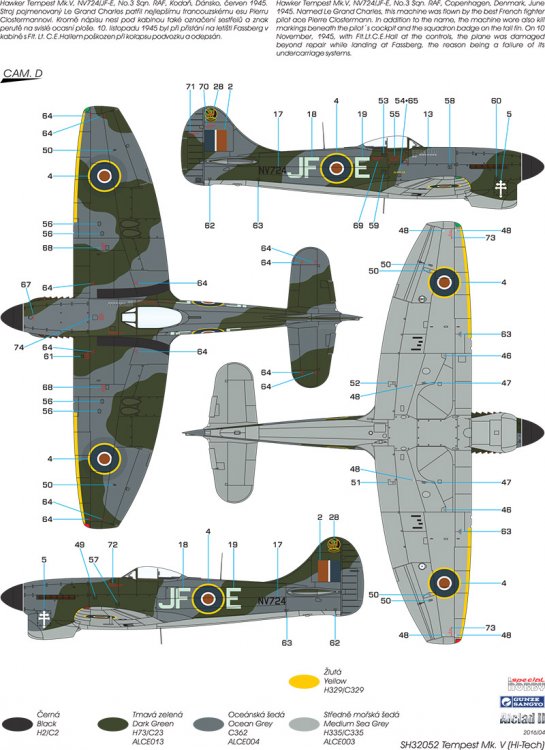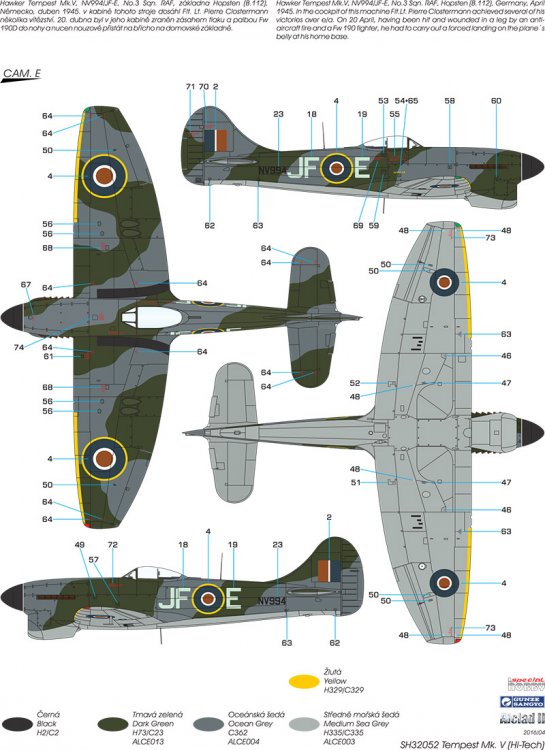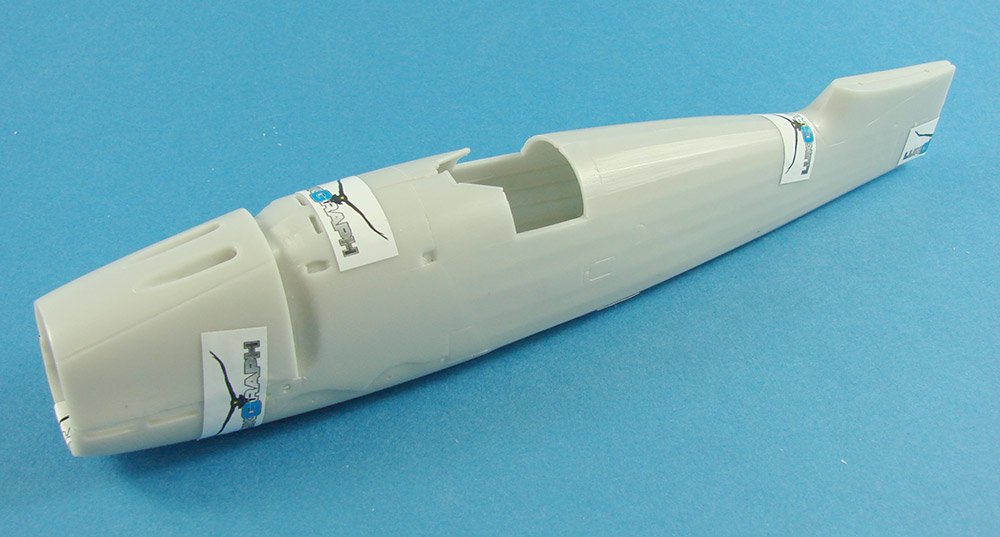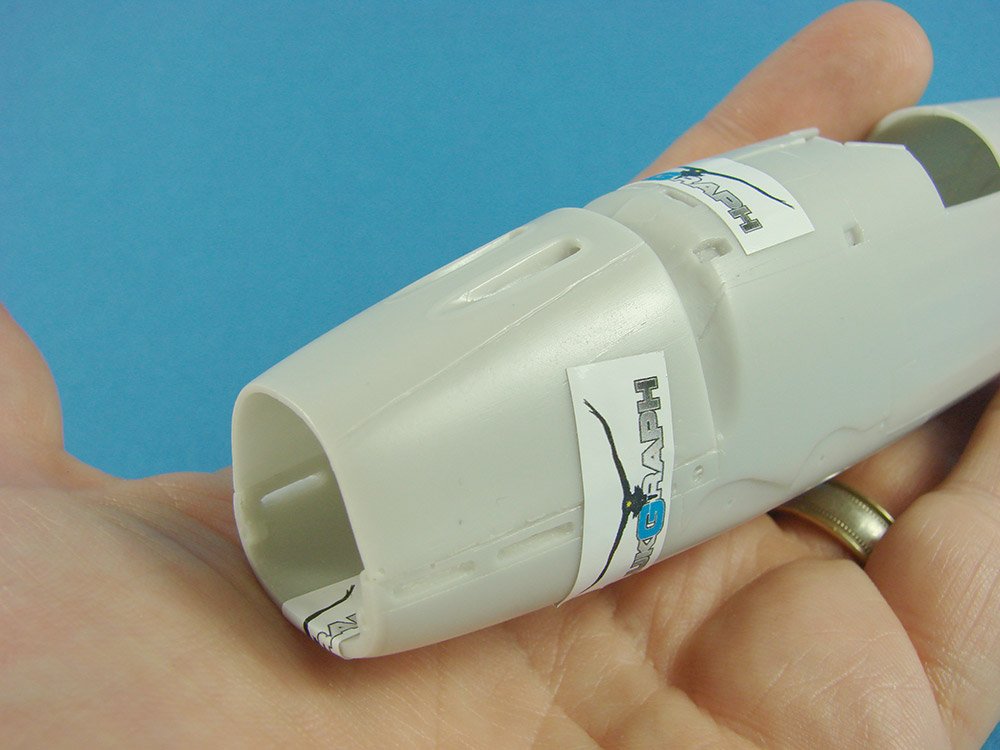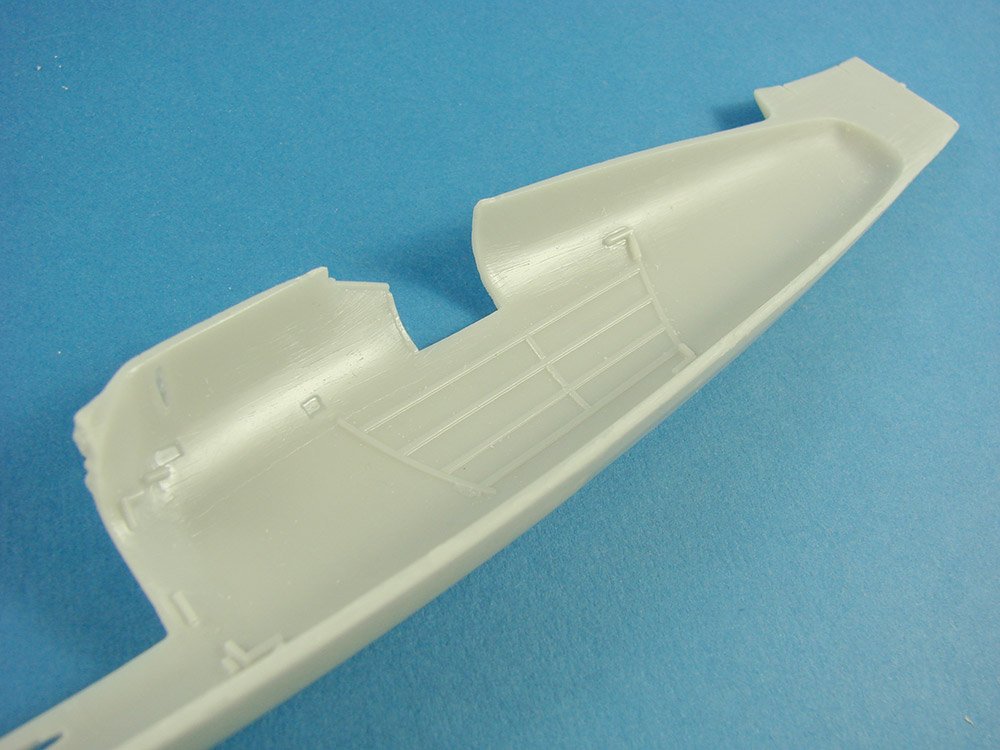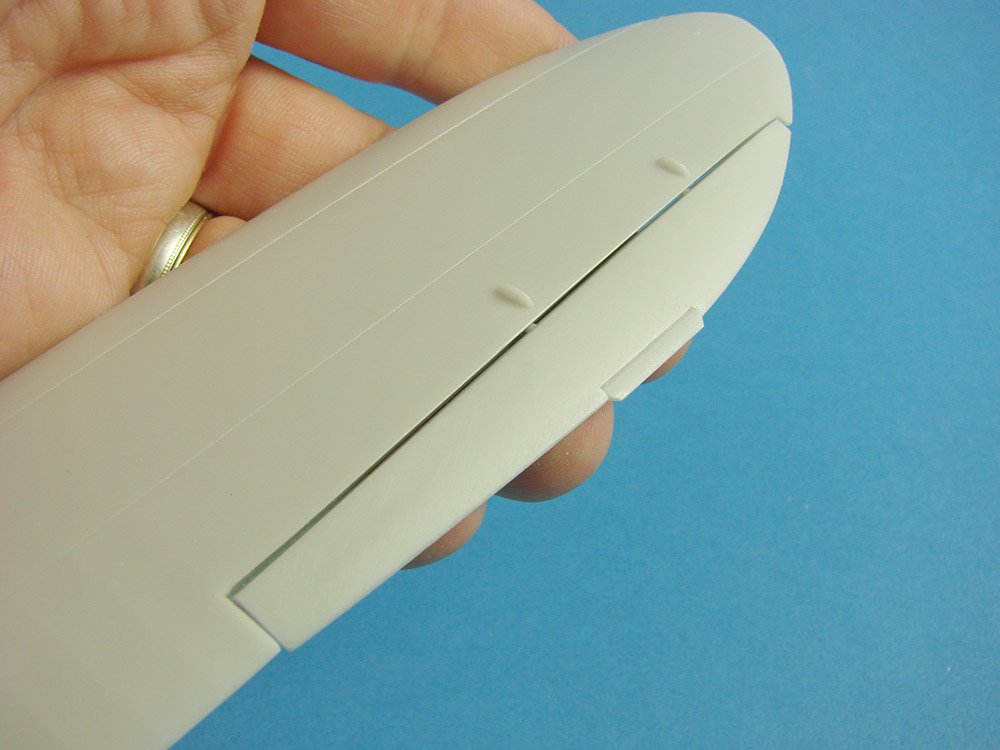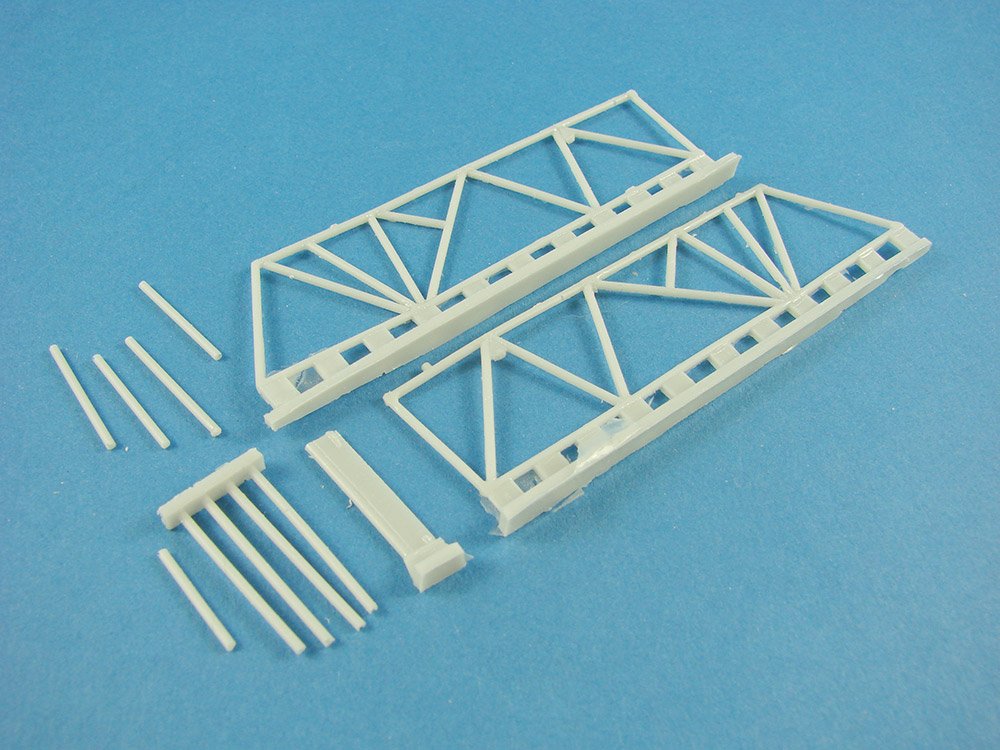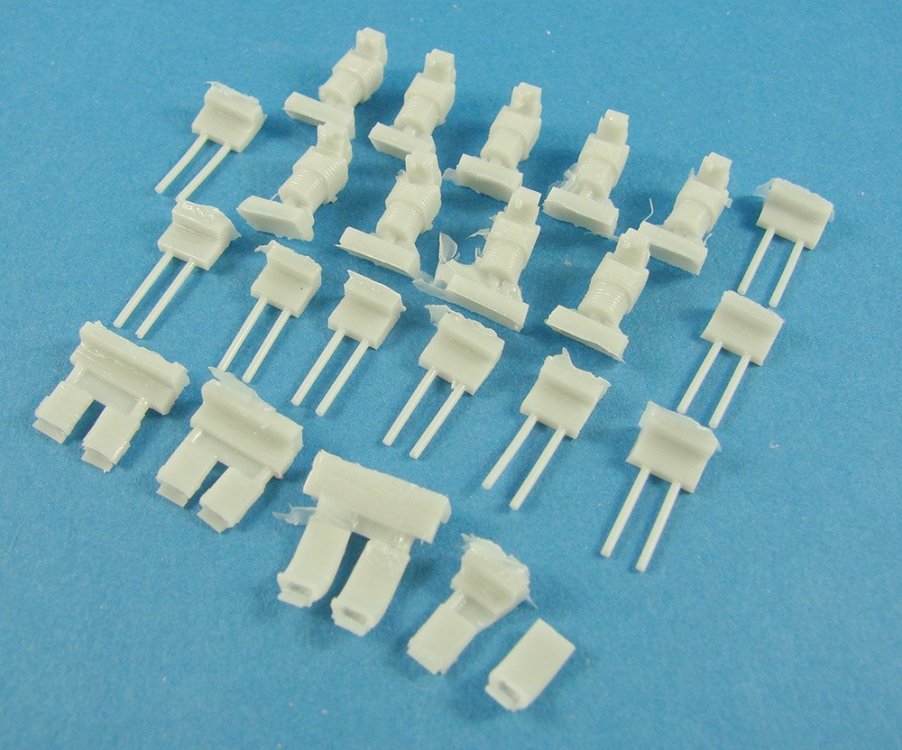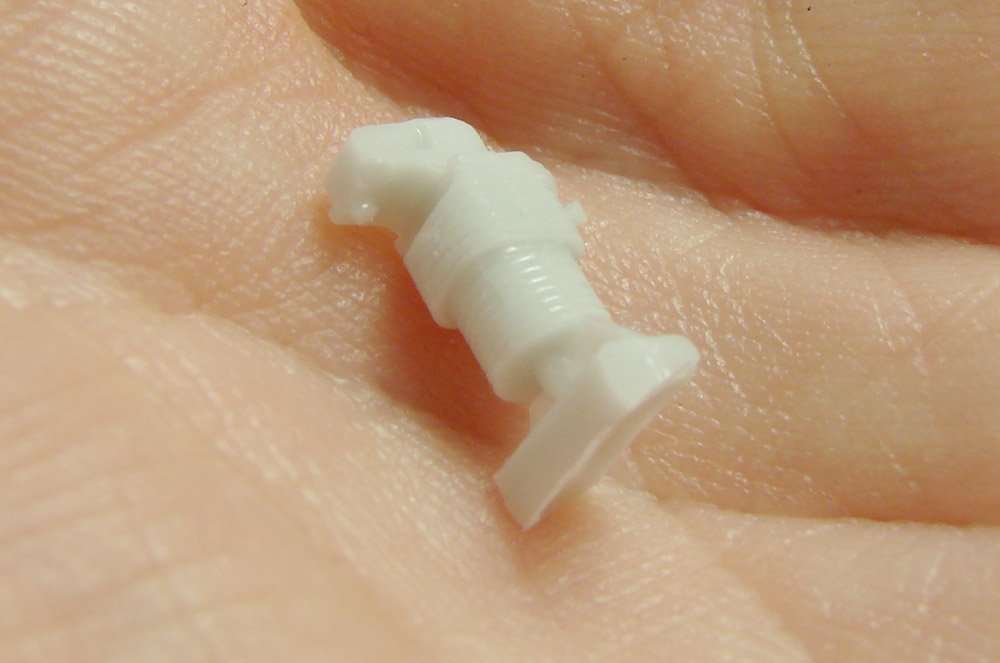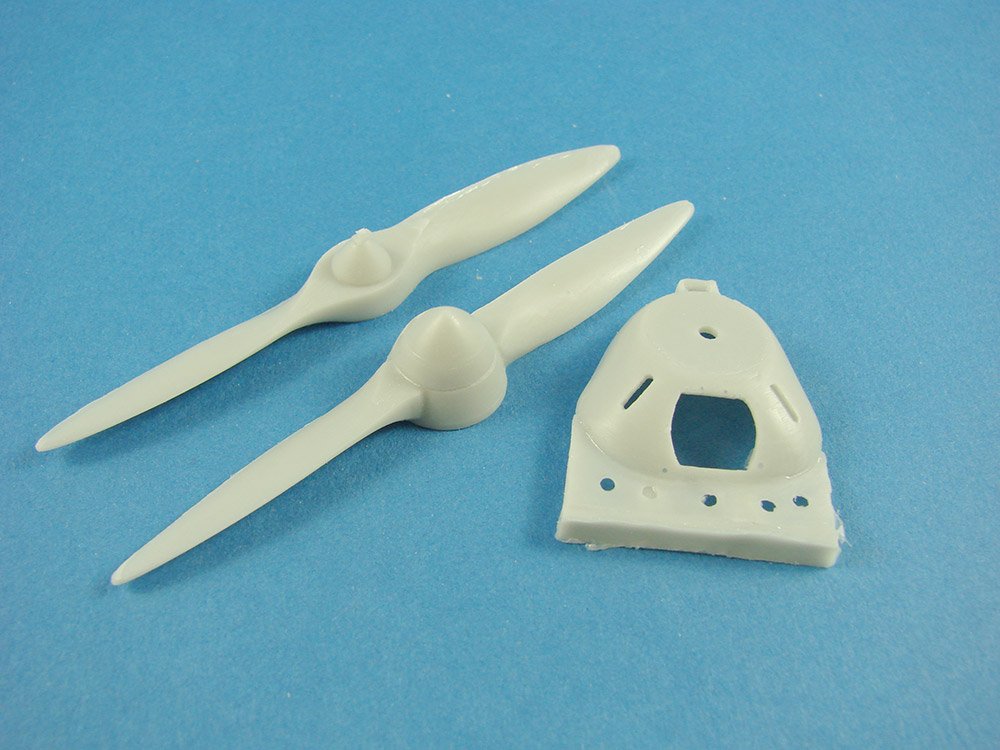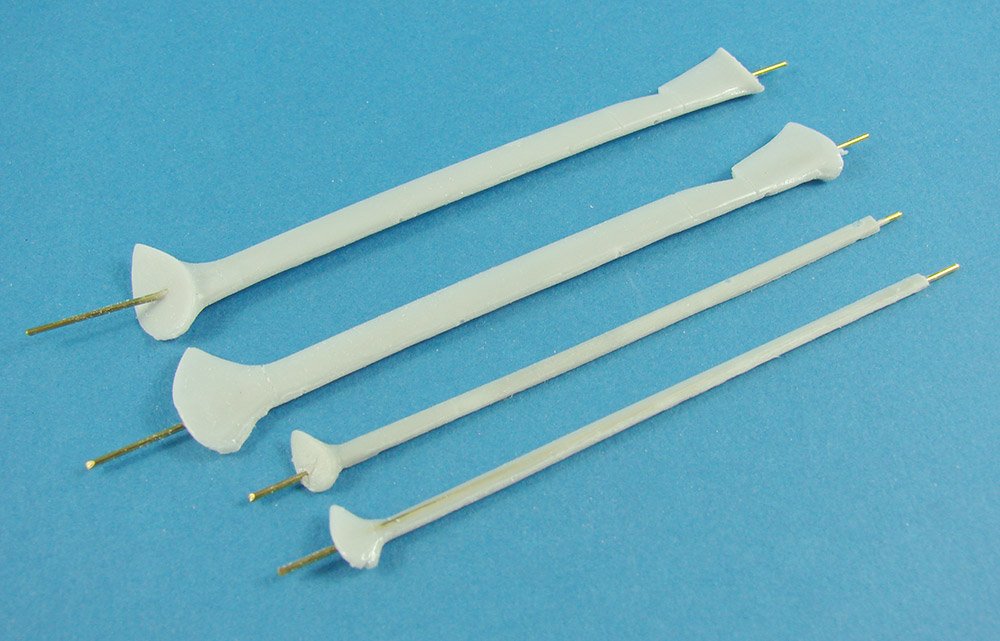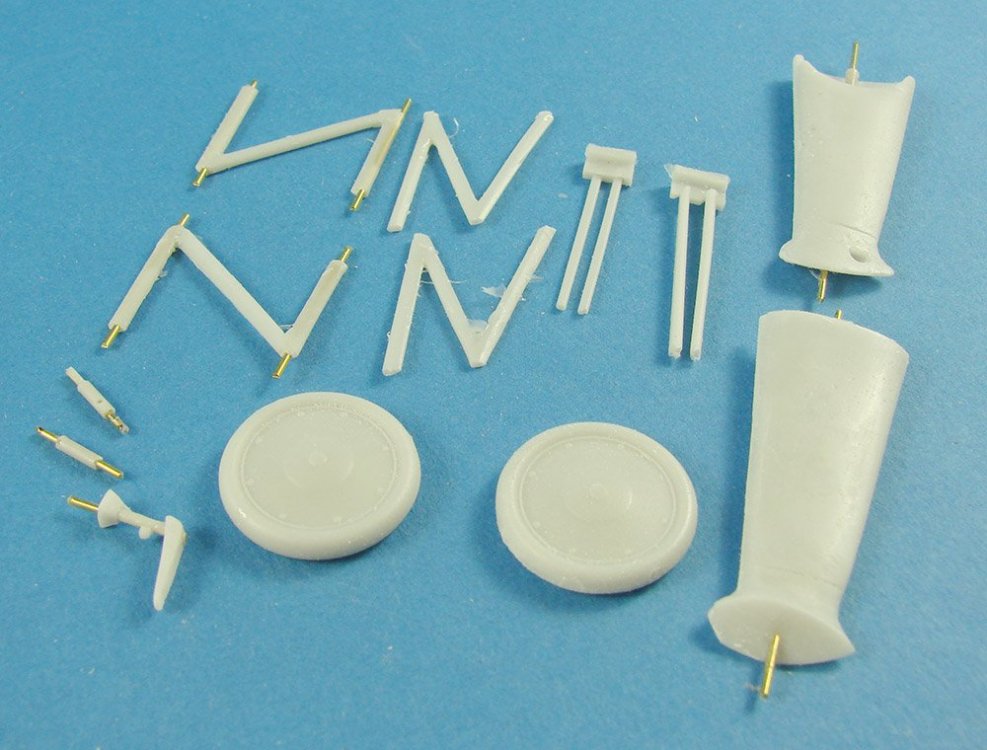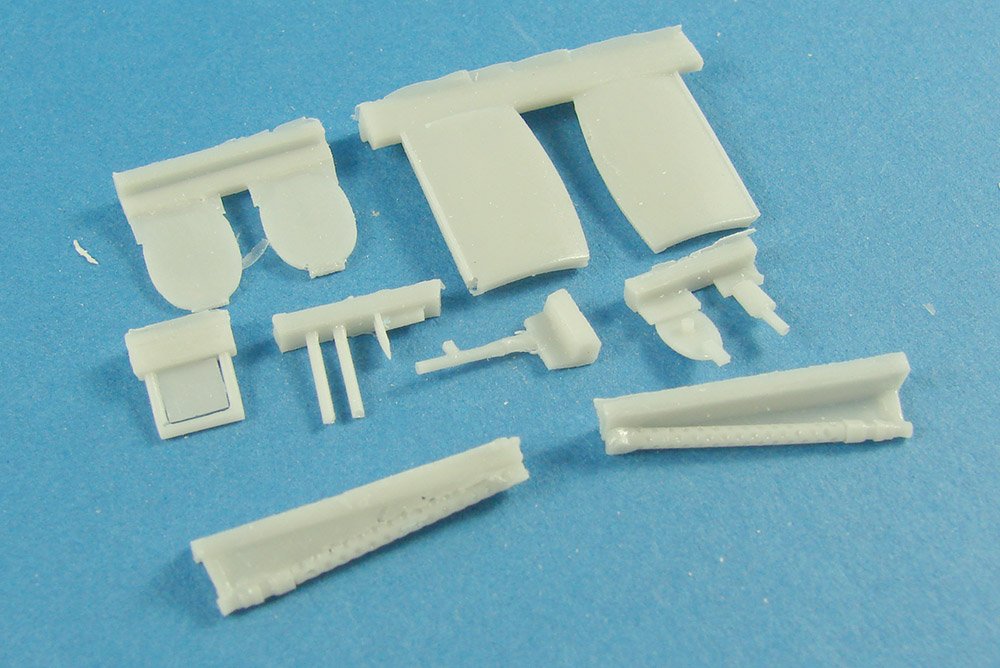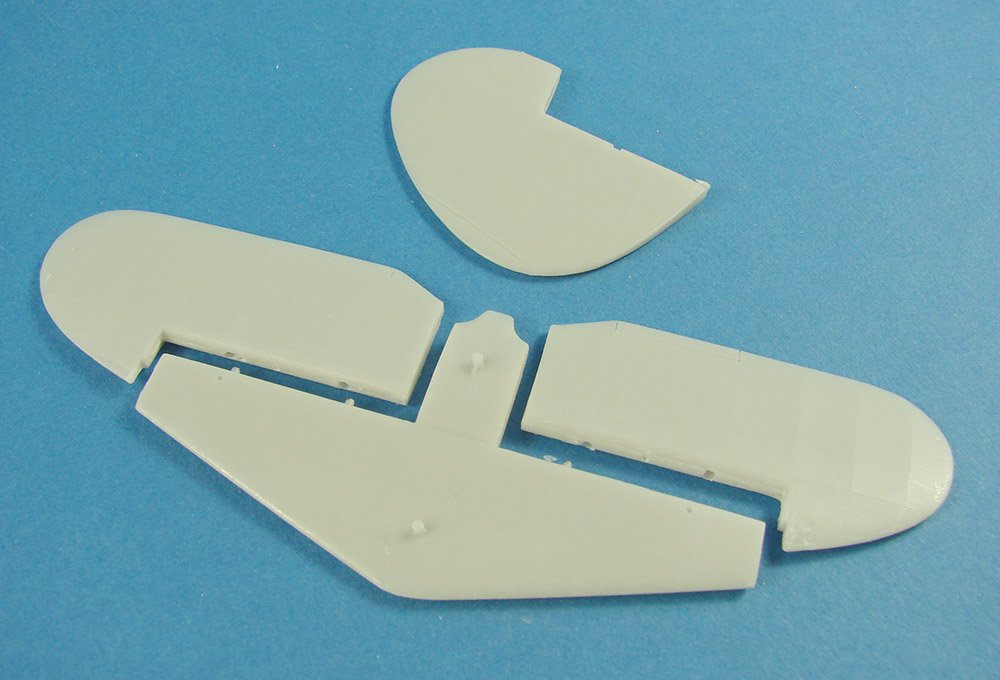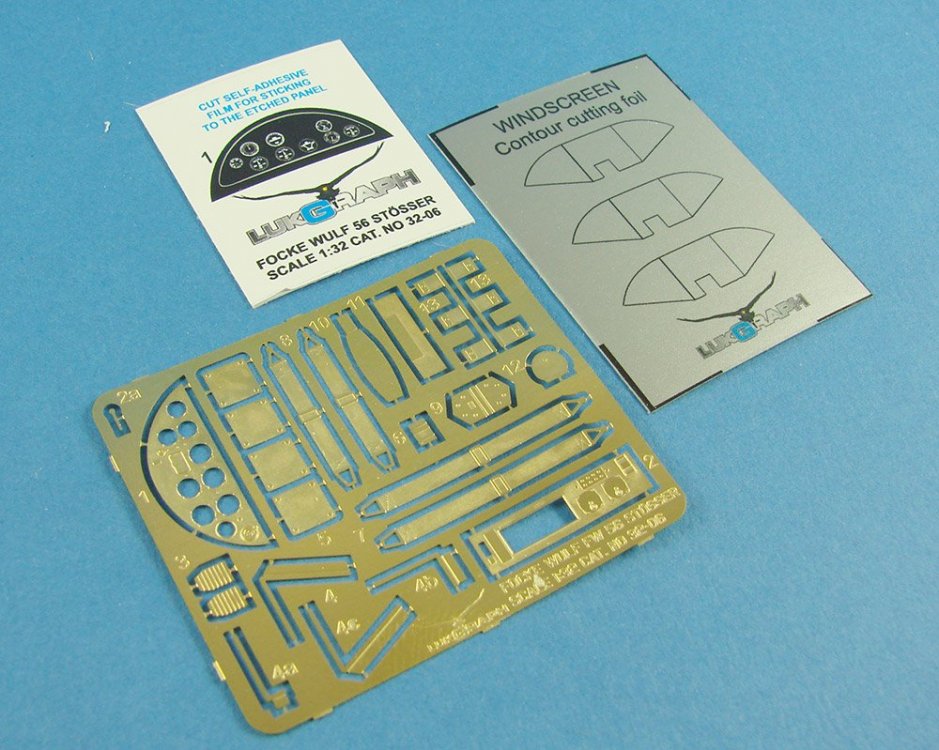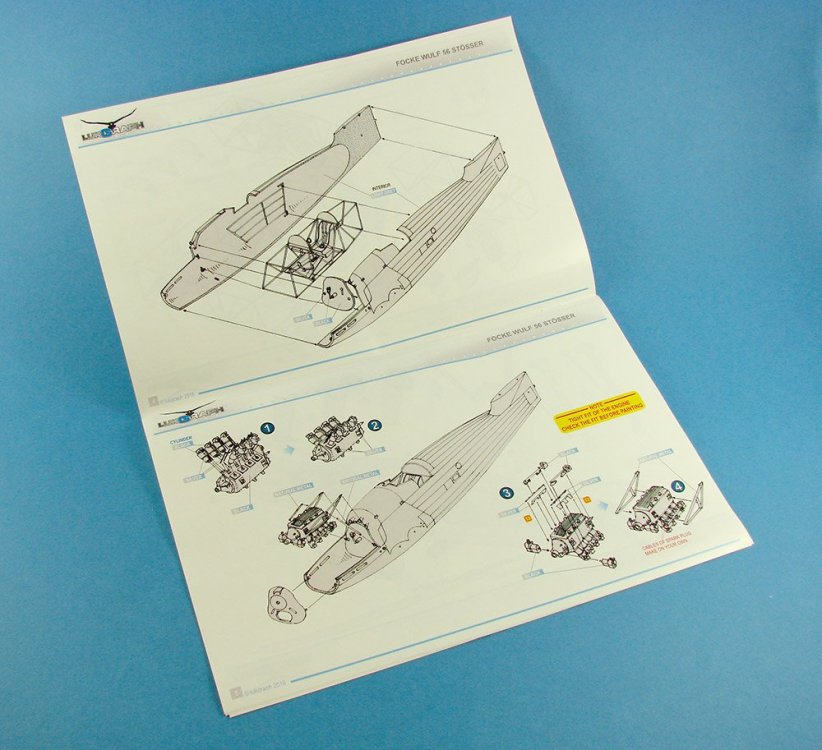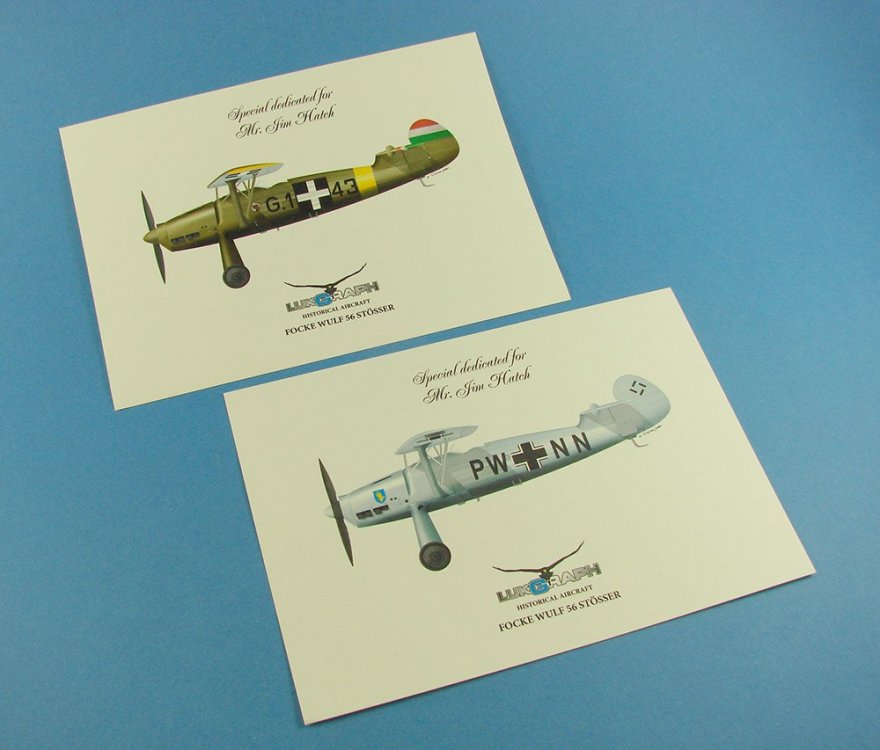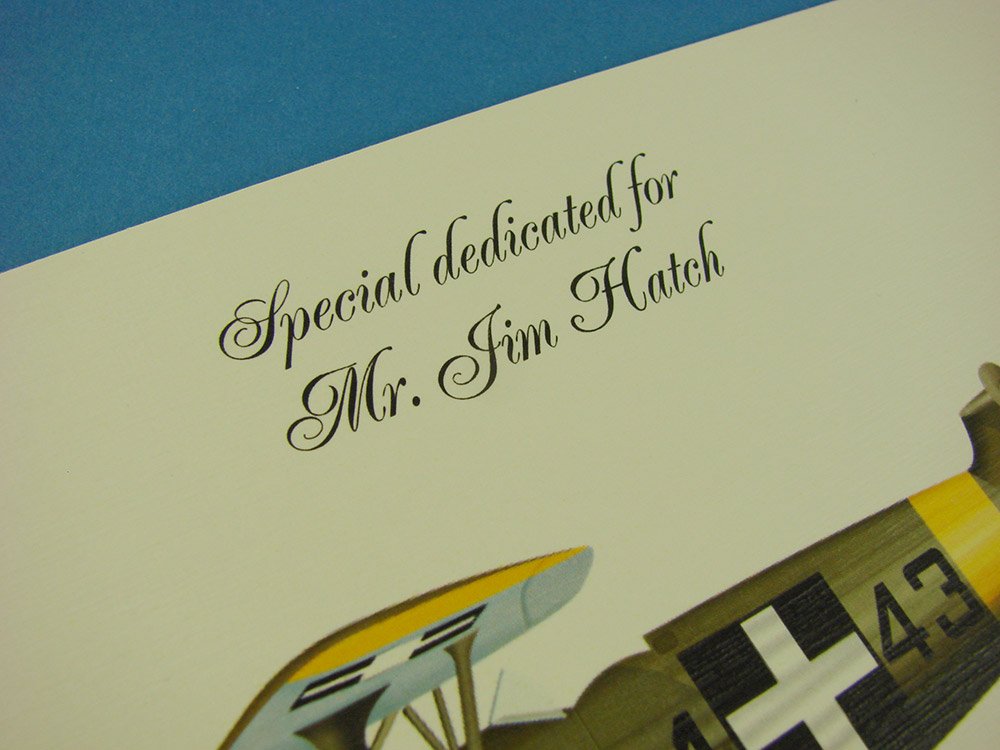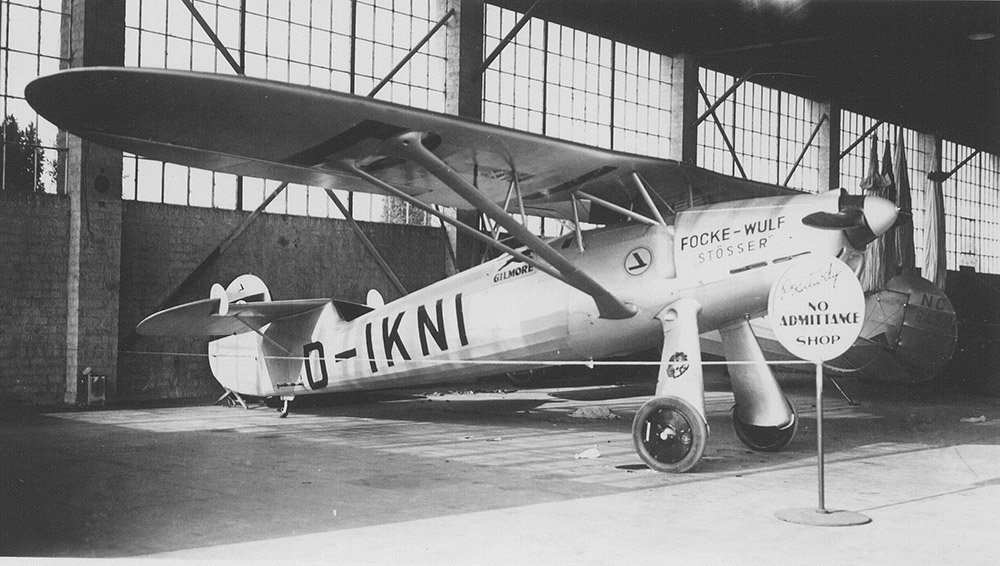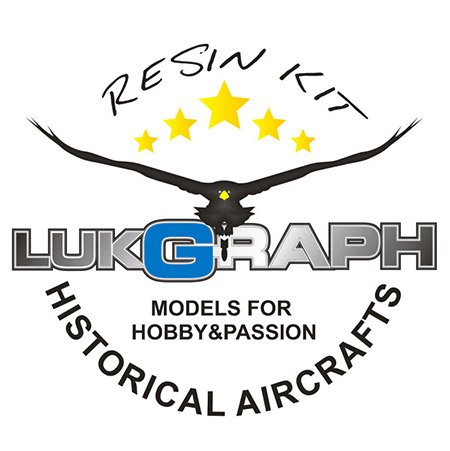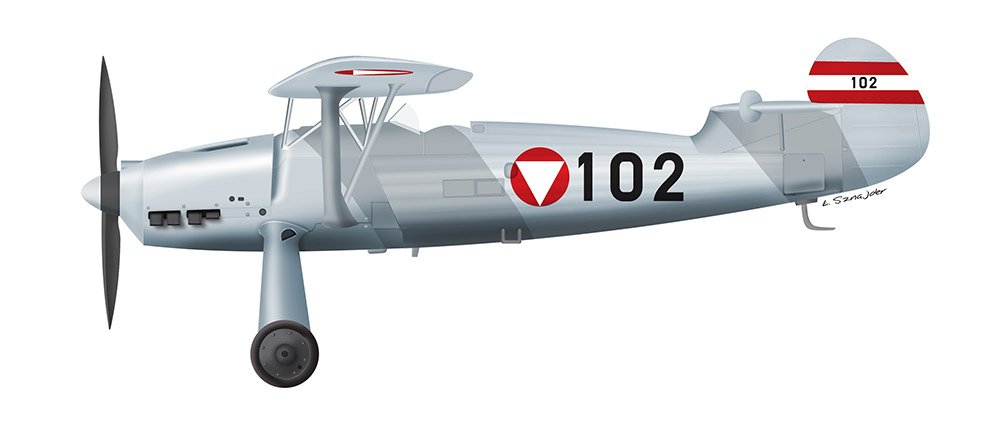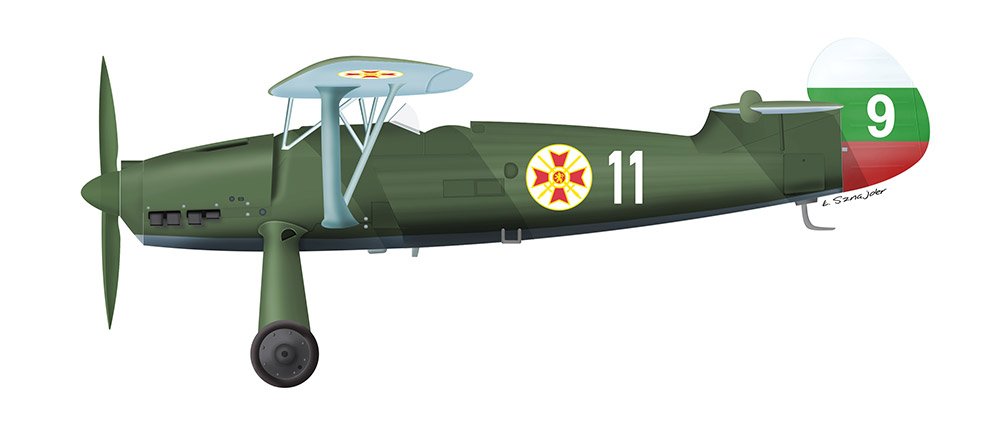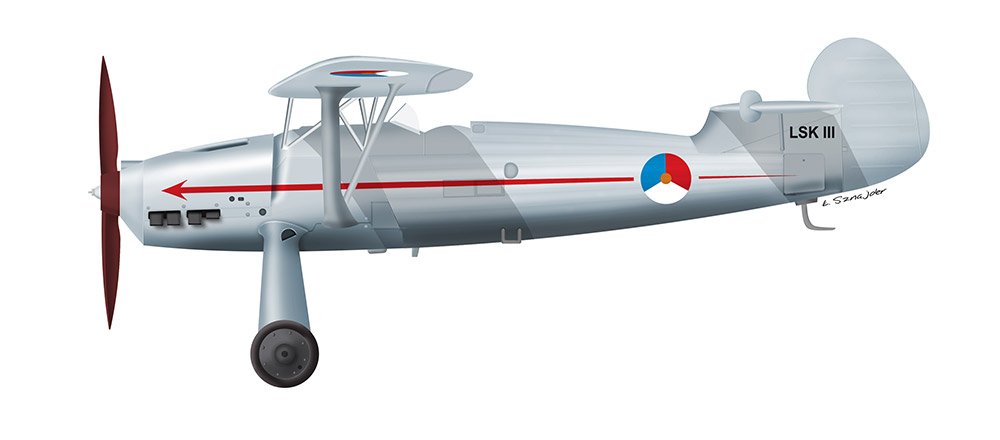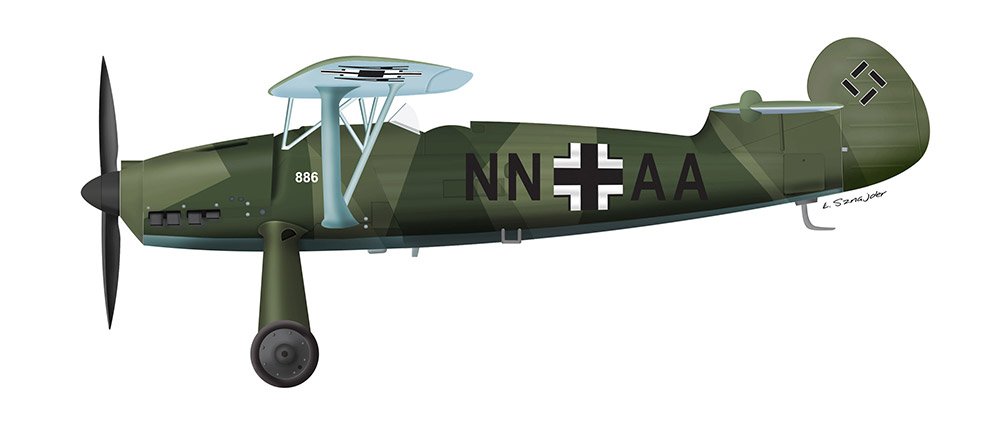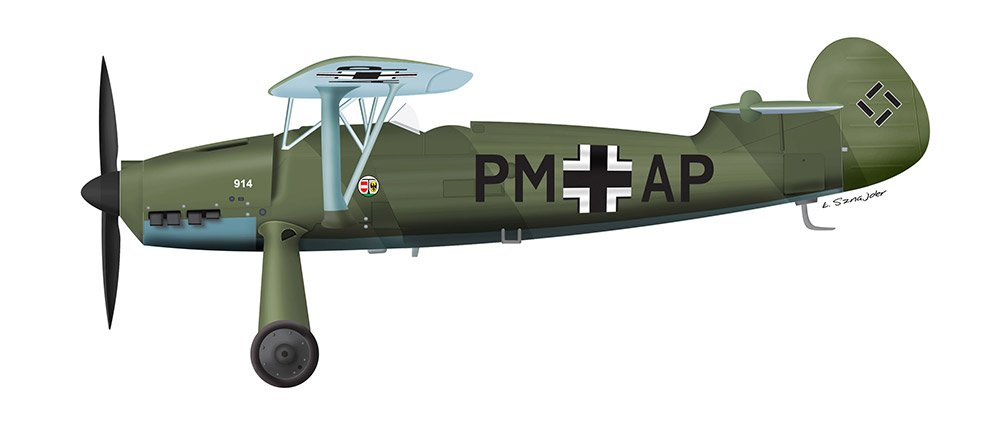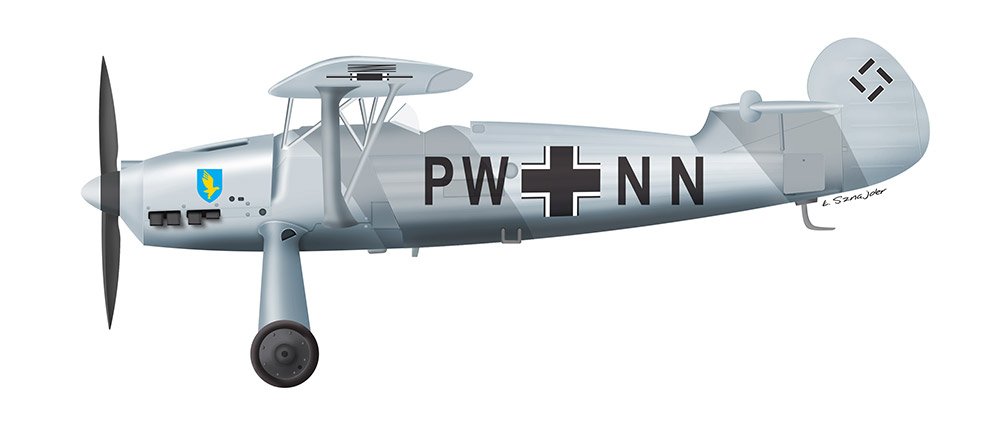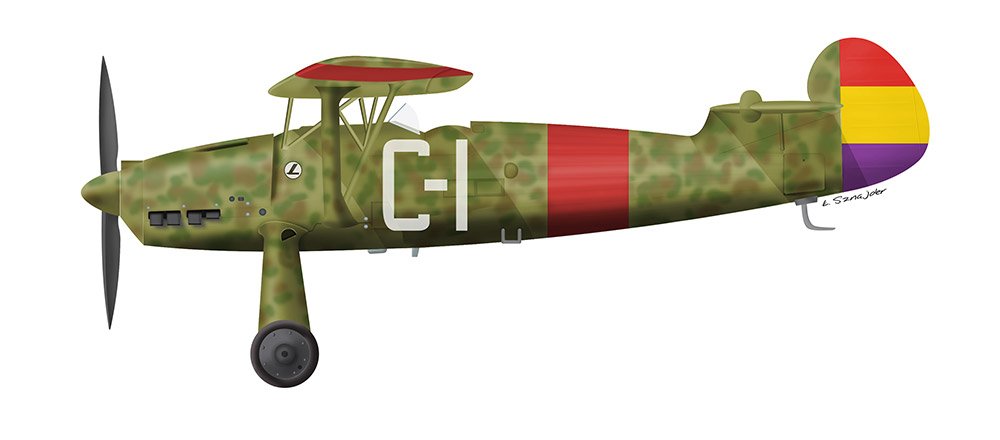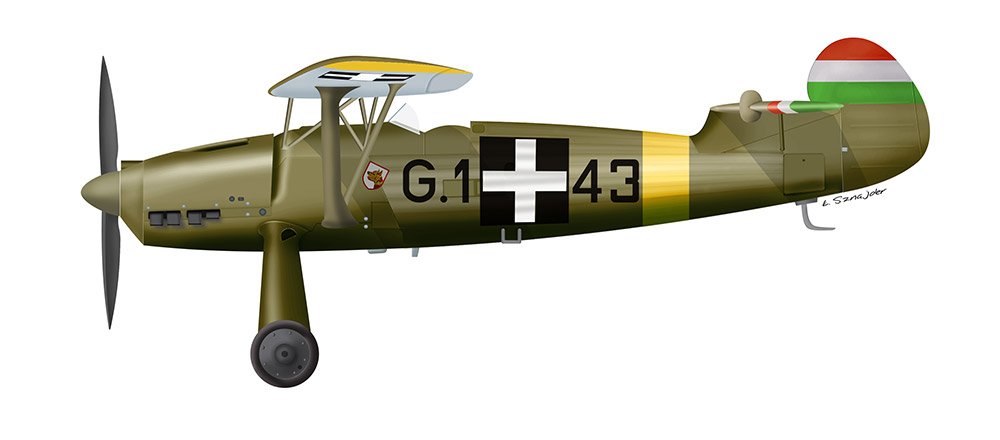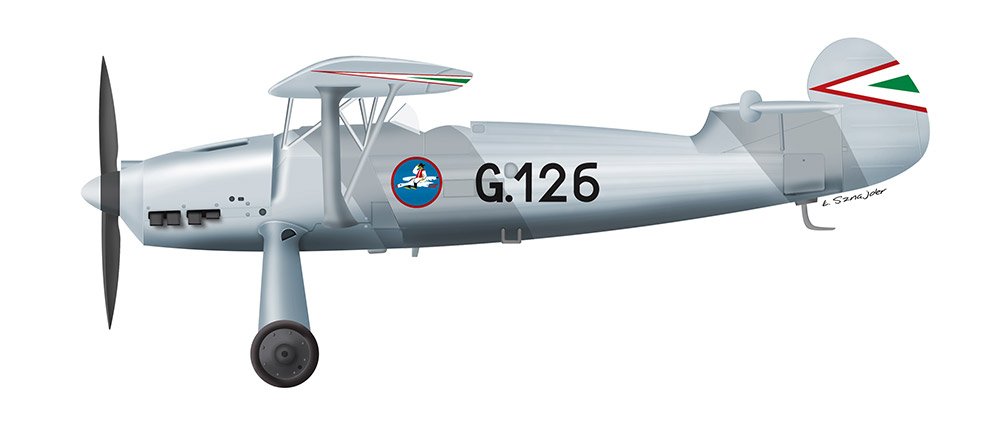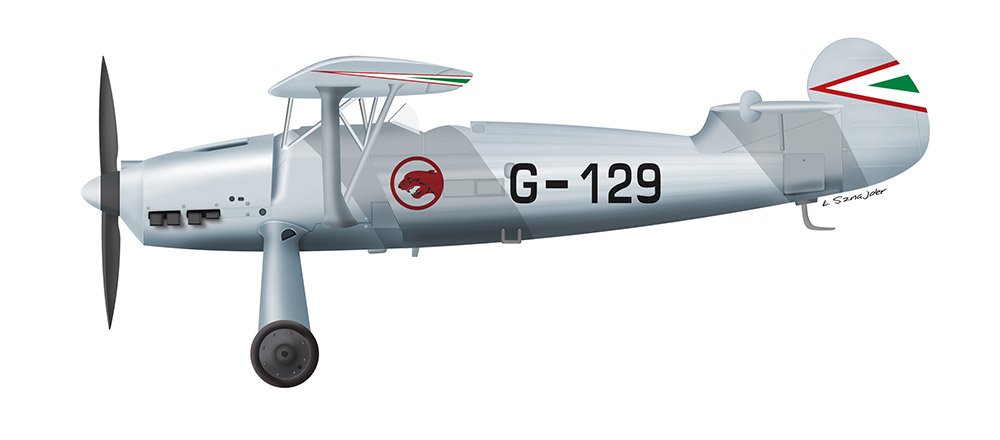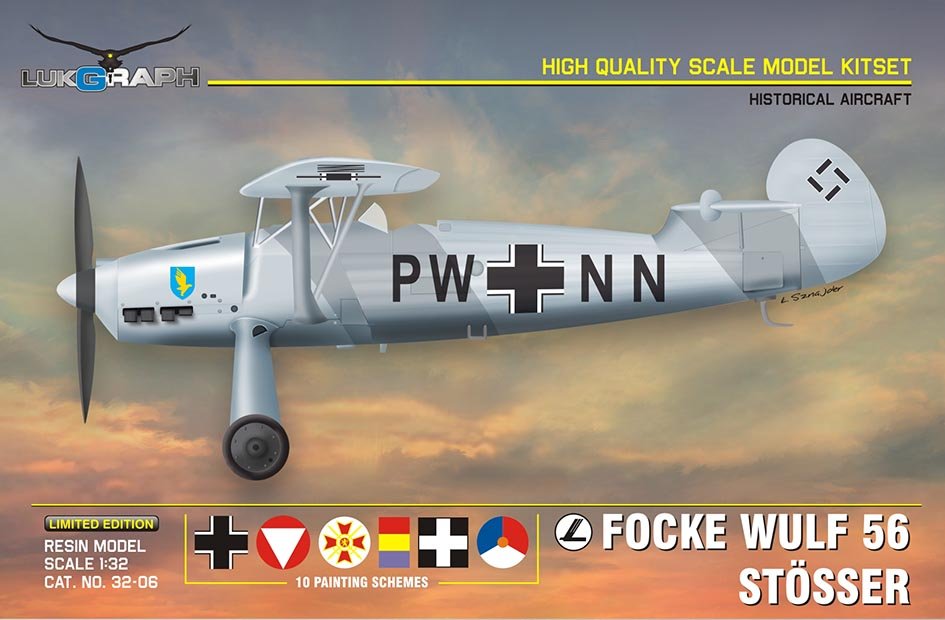-
Posts
3,255 -
Joined
-
Last visited
Content Type
Profiles
Forums
Events
Gallery
Everything posted by James H
-

Special Hobby Tempest Mk.V
James H replied to rkranias's topic in LSM 1/35 and Larger Work In Progress
Looking sweet. I'll be joining you later with a few week photos of my build.- 112 replies
-
- 4
-

-
- OOB
- Tempest Mk.V
-
(and 2 more)
Tagged with:
-
1:48 MiG-31B/BS Foxhound AvantGarde Model Kits Catalogue # 88008 Available from Hannants for £45.99 The aircraft that looks similar to the machine it was designed to replace, the MiG-25, was actually more than a simple rework with lengthening and a second cockpit. In fact, the MiG-31 was a whole new supersonic interceptor, designed to overcome of the shortcomings of its predecessor. Not only had issues with manoeuvrability been overcome, but the type was capable of a higher Mach speed without rick of engine failure. The type also utilises multiple target tracking technology and the Look Up/Look Down – Shoot Down capability, thanks to its advanced Zaslon radar. As well as high altitude interception, along with the ability to shoot down Cruise missiles, escort high flying bombers, and provide strategic air defence, the MiG-31 also had, unlike the MiG-25, a good ability to provide low-level support, whilst maintaining speed and manoeuvrability. The B series of MiG-31 had an improved refuelling probe as well as avionics that allowed multiple aircraft and ground stations to network with each other and share data so that any one individual MiG-31 could act upon that data and destroy/intercept the target. This system is operated via a data-linking system. Currently, Russian and Kazakhstani air forces operate the MiG-31, and the production period that lasted from 1975 to 1994, saw over 500 of the type built, and it is anticipated that they will remain in service until 2030. Existing ‘B’ frames have now been updated to ‘BM’ status, and BS types are now modernised to what is referred to as BSM, with further-improved target detection. The kit AMK are a pretty new name to the market, but already with a respectable number of impressive releases under their belt, such as the highly detailed 1:48 Fouga Magister, and the Aero Delphin etc. Prior to the release of this MiG-31B/BS version kit, in 2015, AMK released the MiG-31BM/BSM to much fanfare, and the kit has been lauded on various forums and on Facebook. There’s no doubt that the in-progress photos and finished images of this kit do indeed show that this was a very special kit release. There are a number of model manufacturers that do listen to their customers, and AMK do seem to be one, as this next incarnation of their kit includes a number of improvements that had been flagged up by builders of the first kit. These include decals for the Germetika canopy sealant, tinted clear sprue as an alternative to the regular parts, and also a re-engineering of some areas to eradicate those areas where ejection pin marks originally resided. I do know that there are more PE parts in this kit, but no longer the cast weights that the first release had. This review won’t compare this kit to the previous, simply because I don’t have the previous release to hand, so let’s take a nice, simple look at what this new MiG-31B/BS offers the modeller. The box itself is no shrinking violet, being a reasonable size, and quite deep, as well as having a nice weighty feeling to it. A rather nice photo of a real MiG-31 adorns the lid, in art that looks a little too similar to the original release, so remember to check exactly which version of this kit you are picking up or putting in your virtual shopping cart. Lifting that lid shows the first sign of real attention to detail. The sprues themselves are tucked in next to three smaller boxes that contain some of the fancier, larger mouldings. Whilst the bagged sprues aren’t all separately packed into their own clear sleeves, they are well packed, and no damage can be seen across any parts on my sample, including scuffing etc. Under the sprues can be found an instruction manual, two decal sheets and a single fret of photo-etched parts. SPRUE A The centrepiece of this sprue are the two lower wing panels that are interconnected with a skeletal internal framework with beams that are notched out to accept the engine positions. Leading edge slats are separately moulded and alternative pieces mean that you can pose these in a lowered or neutral position. Landing flaps are also separate, but the ailerons are moulded in situ on the upper wing panels. Of course, you wouldn’t wish to dynamically pose these anyway, so I find no problem with this arrangement. Surface detail is very good, with various panels and leading edge areas having recessed rows of rivets, with none on the main wing panels themselves. This detail extends to the two upper panels that are moulded here. The inside areas of upper and lower panels have moulded ribbing that should give rigidity to the wing and prevent any possible warping. Several holes need to be drilled out from within, to accommodate wing pylon/ordnance mounting points. Also on this sprue are the lower faces of the stabilisers, single piece dual rudders, control column, and a few small parts. SPRUE B Not so much of a sprue, as the entire upper fuselage section, with a small secondary part attached to it. This large part is a fine example of intelligent moulding, such as was seen on the 1:48 Academy Phantom fuselage. Here, as with the Phantom, the main part was injected through a small opening on the spine, and this injection point is removed on the final kit. The small attached part is the panel that you just pop into the place where the part was injected. Et Voila! A nice touch. Detailing consists mostly of neat panel lines, with only a few rivets occupying the edges of some panel detail. Moulding of this part extends onto the inboard upper wing areas, and incorporates the whole spine, up to the rear cockpit area. Flip the part over, and a generous usage of stiffening fillets can be seen. SPRUE C AMK’s engineering of the fuselage means that the fin/rudder assemblies are integrally moulded to the rear fuselage sides, lapping just underneath the fuselage itself. Inboard panels for the fins are moulded as separate parts, included on this sprue. Detail is really quite exquisite, with subtle recessed riveting, and a small quantity of raised rivets around the forward area of the leading edge fairing. For those of you who wish to pose your model with dropped landing flaps, you will find them on this sprue, as single parts with simple panel line detailing and no rivets. The drooped inboard wing slats are also here, again as single piece units. Other parts include alternative mounting points to pose the stabilisers in either a neutral or downward position, rear fuselage spine fairing, alternative intake flaps doors for two positions, and the body for the IRST. SPRUE D This occupies one of the three internal boxes, and is a single piece lower fuselage. There is no clean-up to perform here either, as the central opening is where the sprue gate would’ve once been, prior to packing. This part is ready to be used with no clean-up to perform. A complicated-looking part, it includes the engine intake channels, lower belly and sides, and also have the main gear bay openings as well as the rear of the nose gear bay. In short, a large part. It’s actually surprising just how big this model is in 1:48 scale. Pay particular attention to the recessed areas that will house the mounted R-33 missiles. Rivets are again used to outline various panels, and not used wholesale, and the interior of the part is contains various stiffening ribs and some mounting points for the engines and gear bays. SPRUE E There will be next to no seams to remove on this model, as evidenced by the contents of another of the internal boxes. The main player here is the complete fuselage/cockpit section. This is connected to a couple of elaborate injection moulding channels, and the use of some amazing slide moulding means that all you need to do is to snip from the sprue and remove the gate points. Exterior detail is commensurate with that of the rest of the fuselage, and the nose cone is separately moulded on this sprue. Internally, two rails help guide the completed cockpit tub into its final position. The remaining two parts form the air intake outer sections. SPRUE F (x2) Both of these contain parts for the engines, including the fans, interior casings with superbly detailed channel detail. These parts slot together and sit within the main upper/lower engine halves. Other parts here include wheels (non-weighted) that are moulded as halves, and also the hubs, R-33 mounting plates and some gear door actuators. SPRUE G Those engine body halves are moulded here, and if you find a way to actually display these things, then you will have some longitudinal seams to remove. For the majority of us, I suspect, the engines themselves will simply act as carriers for the internals that we’ll see through the intakes and exhausts. However, the external detail on these parts looks excellent, and maybe you can do some surgery and remove a panel or so to display these. The rest of this sprue is a mish-mash of various parts from around the model, including the inner parts of the air intakes. Much of the filigree detail will barely be seen when complete, but you know it’s there! Note the parts that form all three wheel bays, which will be fitted to the intake ducts and the forward lower fuselage. These comprise several panels, all highly detailed with valves, plumbing, tanks and louvres etc. I really do like this level of detail, and it reminds me much of the high-end, larger scale models that I’m used to building. SPRUE H The engine ducts comprise four main parts, onto which the wheel bay detail is mounted. Detail on these is also internal as well as external. I don’t know how much you will see when everything is sealed up, so I’ll dry fit stuff before I just airbrush everything én masse. A key component here is the cockpit tub. This is moulded with some fine console detail that really does look good enough to use without having to resort to aftermarket. Note the cockpit lamps and push button panels. All detail is very sharp. Two cockpit bulkheads that will support the crew seats, are moulded here. SPRUE I The first thing to mention is are the stabiliser parts and the two channels within them that allow the parts to be positioned in either a neutral or downward stance. Wing leading edge slat parts, including neutral and downward position parts, are included here. Parts for neutral stance landing flaps are moulded here. The only thing here that looks disappointing are the lower rear fuselage strakes that have a prominent ejector pin mark on each. Still, they’ll be easy enough to fill, and AMK can be forgiven for this, seeing as the kit is pretty intelligently designed. Parts can be seen here for the nose cone pitot and also for the refuelling probe. SPRUE J (x2) TWO clear sprues are supplied here, both of them identical, save for one of them being moulded in a plastic that resembles the gold tinting that is seen on some cockpits. Trying to replicate this yourself is a nightmare, with all sorts of odd concoctions that I’ve seen that barely look realistic. So, thank you AMK! A nice touch is that parts are included for both open and closed versions, so there is no need to try to make separate parts all align and fit neatly. Note that the actual clear panels are quite small, as befitting the MiG-31 canopy style, with the non-clear areas being frosted. Detail is excellent. Frame definition is also first class, so adding masks to these, or making them yourself, should be an easy job. Parts clatity is also extremely high. SPRUE K A small sprue with weapons mounts/pylons. All of these are moulded as single piece units, and therefore no glued seams to remove. No need to make this any harder than it needs to be, and AMK recognises this. SPRUE L & N These are more sprues that contain a multitude of parts from various areas of this model, including cockpit sidewalls/consoles, solid cockpit hoods incorporating internal detail, instrument panels and coamings, undercarriage doors and other landing gear parts. Take a look at the latter and the level of detail. Unusually, the main gear legs are moulded as halves, with a plastic rod and linkages that sits within. Unless this is due to a constraint in moulding, it’s an unusual approach for something that may have been easier to mould as a single part. Both sprues are moulded as interlinked. SPRUE UA (x2) Each of these contains parts for one crew seat, made up from nine parts each. Unlike the previous release, seatbelts are supplied as PE parts. SPRUES XA (x4), XB (x4), and XE (x2) The last small box within the main package, contains 10 sprues, all concerned with the weapons supplied in this release. These are: 4 x R-33 “AA-9 Amos” 4 x R60M “AA-8 Aphid B” 2 x R-40 “AA-6 Acrid” I have to say that the moulding of these is a real joy to see, with the latter two weapons just needing a snip from their sprues, as they come with fins etc. moulded in situ. The R-33 is more or less of that style, but with the end cap that needs fitting and a couple of small stabiliser sub-fins that just need popping into place. All parts, like the whole kit, appear more or less seamless. Check out the detail on these parts too! Photo Etch For this release, AMK have included a number of parts that weren’t available on the original kit, and these include crew seatbelts and the Zaslon radar plate that can be seen when the nose cone is removed. Other parts are included for the seats too, as well as the original ejection pull loops featured on the original kit. This fret is manufactured in bare brass, and has a sort of frosted texture. Connection points are narrow and also thin, so should be easy to nick through in order to remove the parts. Decals TWO sheets are included here. The most obvious one contains the various national insignia, codes and emblems for all schemes, but also has decals for the various cockpit instrument panels and consoles, plus a series of individual Germatika pink seals for the canopy. These are marked as for inner and outer sides. Take your time with these as they could be tricky to apply if you go at it with some ham-fistedness. The second sheet is a stencil-fest, with hundreds of decals for the airframe and for the missiles. Another nice touch here is that AMK have grouped the decals into areas for port/starboard sides, and for the individual missile types. Printing is excellent, although a couple of small defects exist on two of the Russian stars. Colour is solid too, although the Russian stars look a tad pale to my eyes, but that could be an age thing! All decals are nice and thin, and carrier film is minimal. All decals have a glossy finish. The THREE schemes on offer here are: MiG-31BS, 16 Blue, Russian AF, Chelyabinsk-Shagol AB, 2014 MiG-31BS, 23 Red, Kazakhstan Air Force, 2012 MiG-21B, 73 Blue, training unit, Savasleyka AB Instructions This comes in the form of a glossy, 28 page booklet that opens with a brief history of the MiG-31, followed by several pages of colour scheme profiles. Paint references are supplied for FS codes. Constructional illustration is given by finely drawn images that show as much detail as the parts themselves, but despite the fussiness, seem to be pretty easy to follow. I would’ve liked to seen a different colour text for the PE parts so they are easily identifiable at a glance. Where options are given for things such as dropped slats etc, these are readily identifiable and easy to follow. The final pages in the manual are tied over to stencil application maps, and sprue images. Conclusion After reading the hype surrounding the original kit, and having seen their Fouga Magister, I was expecting quite a lot from this release, and I think that has been more than delivered. The whole package is well presented, with a superbly engineered model that is quite quirky in places with regard to the single piece forward fuselage, missiles etc, but the sheer detail presented in the model, extending to the engines and the wheel bays, look to make this nothing short of a captivating build. For actual schemes, there really wasn’t too much variation with the MiG-31, and this kit reflects that. I also have to say that for the price (Hannants is £45.99), that I think the AMK kit represents excellent value for money with what looks like a satisfying model to build. I’ve been checking out some of the original release builds on various forums, and I really don’t hear a bad word about the kit. I really can’t wait to get stuck into this myself, but first I need to clear the bench of 3 projects! Highly recommended! My sincere thanks to AMK for the review sample seen here. Check out your local store or online hobby shop for this one.
-
Smoooooooooooth
-
....correct. This is not a short-run kit. I know this as to be true, and I really wish people would report it properly. It does the reputation of the companies products a real disservice. Now, you really should get one of these. I wouldn't sell you a pup, as we say in the newly EU-free UK
- 14 replies
-
- 1
-

-
1/32 Tempest Mk.V “HI-TECH” Special Hobby Catalogue # SH32052 Available from Special Hobby for 79,90€ Unlike Spitfire development, where even major airframe revisions saw the type keep its original name, Hawker’s Typhoon project was different. The Typhoon wasn’t without its problems, such as a seemingly unstoppable leaking of carbon monoxide gas into the cockpit, and of course that tail unit which had broken away completely on some aircraft, ending with a series of reinforcement straps that were designed as a simple fix for this. Like the Hurricane, the Typhoon also had a thick wing section that provided the machine with enough space for heavy armament, fuel tanks and resulted in a steady gun platform that could be used for low-level operations. Unfortunately, the thick wing was responsible for high levels of drag that slowed the aircraft at certain altitudes, and affected climb rates. To fix these problems needed a number of radical solutions which resulted in Sydney Camm and his team taking the Typhoon literally back to the drawing board. The resulting aircraft was sufficiently different enough to the Typhoon, as to eventually merit a name change, and in keeping with Hawker’s use of severe storm condition names for its range of fighters, ‘Tempest’ was chosen. Originally, the type was to have been called Typhoon II. Six prototypes were built, using different engines, resulting in not just the large-intake Typhoon style machine being built, but also a radial machine and a sleek-cowl Griffon-engine Tempest. Other variables including bubble canopy and car-door style canopy (á la early Typhoon), were included. The small tail fin surface of the prototype machines was eventually enlarged too, and the recognisable filleted fin introduced into production machines, as well as the wider span horizontal tail-plane that was seen on later versions of the Typhoon. A wider track landing gear helped with higher landing speeds. What made the Tempest radically different to the Typhoon was the design of a sleeker, laminar flow wing that was designed by NACA in the USA, and implemented on the new Mustang design. The Tempest Mk.V, which is the subject of this kit release, was fitted with a Napier Sabre IIa/b liquid-cooled H-24 sleeve-valve engine, and had wingspan of 41ft, length of 33ft 8in, and a maximum speed of between 432 and 435mph at 19,000ft. Armament was typically Mk.II/V Hispano cannon (x4), and rockets and bombs could be carried externally, as could droptanks for increased range/operational time. The Tempest went through various incarnations, and the later Sea Fury was a development of this, through the Tempest II family, retaining the later Bristol Centaurus engine. The Kit It really does seem like a long, long time since Special Hobby announced their Tempest kit. Of all the comments I’ve been reading online, and from people I know, this does appear to be a highly anticipated release, and offering the modeller an alternative to the PCM kit that was released in 2013. Currently, the PCM kit isn’t really showing up as available from various retailers. When Special Hobby said they would send me a copy of their new kit, I knew I would be in for some enjoyable hours rifling through the box and writing an article. Remember, I’m not generally looking at accuracy here, as this is an out-of-box appraisal that will look at details, possibilities, engineering, options and quality. Special Hobby’s Tempest kit is packed into quite a large, standard type box with a removable lid (take note, Revell!), and adorned with a classy artwork of a V1 being taken down by a victorious machine, piloted by Wing Commander Roland Prosper Beamont. Of course, this is one of the FIVE scheme options provided, and the only one that carries the D-Day invasion stripes. No other profiles are shown on the box lid, but there are some renders of the included resin parts and other items supplied in this HI-TECH boxing. Lifting the lid is difficult due to the tight fit, but once off, you’ll see EIGHT sprues of medium grey styrene, packed into a single clear sleeve, ONE sprue of clear parts that is packed into a separate sleeve, and a cardboard bridge that has TWO bags of resin stapled to it, plus a package with the masks, decals and photo-etch parts. A large colour-printed instruction manual lies at the bottom of the box. SPRUE A Only two parts here, but pretty key ones; both fuselage halves. As Special Hobby have future plans for releasing the Mk.6 and Tempest II, the nose is moulded separately, allowing this tooling to be good for all versions. The kit shows just how far this company have come in the last years, with regards to both moulding, tooling and detailing. You would be hard pressed to differentiate the Tempest from a kit made by a whole multitude of more mainstream manufacturers out there, such as Hasegawa, Revell, Airfix etc. Surface detailing is excellent, with restrained, even rows of rivets, and lots of extremely fine panel lining and port/panel access plates. Edges are sharp where the wing will meet the fuselage etc. and the parts have a nicely polished finish to them that wouldn’t look out of place on a Tamiya release. The rudder is separately moulded, and where the nose cowl parts will fit, the forward fuselage has a moulded bulkhead that will provide rigidity to the proceedings. Internally, those high standards of detail are also evident, with stringer and former representation being both refined and sharp, and with associated rivet detail included. Only one ejector pin mark exists in this area, and this is on the area adjacent to the instrument panel. As no other detail is in the vicinity, removing this will be easy. Some detail is also included around the area of the retractable tail wheel, using the same level of refinement seen in the cockpit area. Note also that this model has locating pins too, unlike some of the other less mainstream model kits. I have to say here too that Special Hobby is NOT a Limited-Run company, but fully mainstream. SPRUE B Wings, glorious wings. These are supplied as a single span lower part, and upper port and starboard panels. Note that the inboard leading edge is a separate part, accommodating the future kits that will have intakes in these places. I have to say that each time I take a look at this kit, I like it more and more. Surface detail is commensurate with that of the fuselage, incorporating full rivet detail (plus double rows, where applicable), finely engraved panel lines, fastener detail, access panels and nicely shaped cannon blisters. All control surfaces are integrally moulded, so can’t be posed without taking a saw to the model. Ailerons are moulded along with very fine actuator arms that really do look very good. Cannon shell ejection chutes are also finely moulded. One thing I like here are the tabs that protrude from the upper panels, and provide a support for the wing to fuselage connection. Actually, there is another purpose for those tabs. If you flip the wing parts over, you will see they form the roof of the main gear wells. These areas contain rib and stringer detail, along with rivets, and this will be detailed further with various rods, pistons etc. All of this will be framed by the gear bay walls that are supplied as separate parts that will be fitted into the recessed area in the upper wing panel. Cannon fairings are separate parts too, and the wing has a small bulkhead within that stops them from being inserted too far within. SPRUE C You will be able to pose the elevators dynamically, as these are moulded separately to the stabilisers. All parts here are the traditional upper and lower halves, and external detail is of the same high standard that we have seen so far, including rivet and fastener detail and trim tab actuators/actuator fairings. Other parts included here are for external drop-tanks and bomb bodies. Bomb fins are separately moulded. Bombs and tanks are moulded as halves also, and with the latter, you will of course need to reinstate any panel line detail that may be lost from seam eradication. The fuel filler cap is nicely engraved, but I think the detail to the rear of this is supposed to represent a pipe, and is instead moulded as a fillet. If this is the case, cut away and replace with a little length of bent, rigid wire. SPRUE D This sprue looks very Eduard-ish in design, with its large radius corners. Here we have the fabric covered rudder, complete with its rib tape detail and metal trim tab. This is the only fabric covered area on the Tempest, and I do like the representation here. The multiple undercarriage door parts are just beautiful…both inside and out, with some great detail there, and no pesky ejection pin marks to worry about. Small tags have instead been placed externally to the main doors, and these just require snipping off, followed by a quick swipe of a sanding stick. Et voila! Other parts here include the upper, chin intake wall and the bomb release fairings. SPRUE E For the first time, the instructions show parts here that won’t be used on this build. Here, that is for a second set of propeller blades. Engine cowl halves are moulded here, as are a number of parts that form the flap section and intake outlet to the rear of the main intake. The exhaust attachment boxes can be found here, and these will just glue internally. A two-part spinner is included, with the back-plate including channels that will precisely angle the propeller blades. There is a little flash on the spinner, but nothing to be concerned about. One thing to note is that the fuselage decking to the rear of the pilot, is included here as a separate part. That’s a nice touch as there is a lot of detail in this area, and removing a seam would have been a pain in the arse. Other notable parts here are the upper and lower parts for the wing leading edge inboard areas, where future kits will have the intakes attached. SPRUE H Quite a few parts here are shown as not for use on this release. These include two sets of balloon tyres, several intake parts, leading edge intake parts, and also a seat back etc. What can be used here are the various undercarriage parts, including well detail, walls and the struts, pistons and rods themselves. Looking at how refined much of the detail is here, I’m going to stick my neck out and say it’s Tamiya-esque. Simply gorgeous details that you’ll bury away in those gear bays. Even the sprung-loaded rods look very authentic and filigree. I am particularly impressed with the gear struts and the detail definition here. Please be careful with the removal of parts from this sprue, as so many of the landing gear parts have some very fine detail protrusions. If in doubt, use a razor saw. Note also the forward cockpit bulkhead and the armoured frame onto which pilot’s seat will fit. SPRUE I A small sprue, but one with perhaps more parts on it than any other. One area that features heavily here is the cockpit. For me, a nicely detailed cockpit is the very heart of a satisfying project, and this cockpit it certainly better than most I’ve seen in quite a long time. Two detailed tubular side frames are adorned with various fixing plates and panels and brackets, and there are numerous console parts, throttle, spacers, torsion rods and linkages etc. The main instrument panel is moulded in three parts; central panel and two angled panels that fit to its sides. Be careful here as there are two different sets of side panels. The instructions clearly show what you should not use. Here you will also find the canopy rails and three different types of joystick grip, although none of these are shown as for use, with resin parts favouring these all along the way. Presumably these, like the seat and other parts, will be used in any future, standard boxing that isn’t classed as ‘HI-TECH’. The plastic parts are actually still very nice, as are the cannon fairings that will also be ditched in favour of the resin extras here. Again, watch out for the numerous parts that won’t be used here, and there are a fair few of them. SPRUE J The last grey styrene sprue. Another bulkhead is supplied here, for the rear of the cockpit, and the exhausts are included as halves. It’s a little disappointing that Special Hobby didn’t include the resin ones they now sell, as part of this HI-TECH offering. I would’ve preferred those to the cockpit seat, for instance. It will take some careful seam removal work on these parts. More wheel well parts are found here, as well as the three-part assembly for the tail wheel, again with some very nice structural detail included. More unused seat parts can be found, so some nice parts for the spares box. Several intake parts are moulded here, as are the bomb sway braces and fins and tail wheel strut. The most obvious part though, the radial engine of the Centaurus, is just there to tease us for the future release. SPRUE K This is the clear sprue, and on my sample, the windscreen has broken free from the runner. It still looks ok to me though. Thankfully, the main hood is still attached. A number of other parts here are drop tank fairings that I think were made from clear acetate or similar. Nice to see these, and they’ll certainly show off that wire modification I mentioned earlier, for the drop tank itself. Finally, note the various wingtip, fuselage, tail and wing-underside lenses for the various lights that were fitted to the Tempest. Clarity is very good, but a little scuffing on my main hood means that I will need to polish it away. Plastic Summary This kit is almost flash and seam free, with nice tight sprue gate points that are generally well placed so as not to cause problems. I can’t see any sink marks either, except for a couple on the reverse of a part, so they don’t count. Ejector pin marks; there’s only two I can see that need removal, and that will take just a few minutes. Plastic quality is excellent, and the quality of the mouldings are very high quality. Resin parts Two bags of parts are supplied here, and these are cast in dark grey resin. These include: Seat Two sizes of main gear wheels (weighted) Anti-shimmy tail wheel Cockpit components (tread boards, pedals, throttle quadrant/levers, control stick/grip, seat, trim wheel, internal windscreen frame) Cannon fairings These parts are also very high standard, with fine detailing. On my sample, the tread boards are slightly warped and will need a dip in hot water, and a stem has broken from the windscreen internal frame. This is an easy fix, fortunately. Casting blocks will generally be easy to remove too, and there shouldn’t be any nasty surprises here. Photo Etch Only a small fret here that includes parts for the fabric seat belts, control grip trigger, whip aerial and mount plate etc. This small stainless fret also contains a small notch that you need to align on the ailerons, and use as a scribing template for the small trim tabs. Seatbelts These are produced by HGW, from their microfiber material, and should need no introduction. Being laser-cut and pre-printed, all you need to do is to snip and assemble. Just remember to peel the backing paper from them first! Masks A small sheet of vinyl masks is included, for the canopy, lights and wheel hubs. These are sharply cut and exhibit no shrinkage. Decals THREE sheets are supplied here, printed by Eduard. The largest contains roundels and fin flashes. Peeling off the protective sheet does seem to have removed some of the very tiniest of specks of ink from them, but this is so small that it probably won’t be noticeable when they are applied. A slightly smaller sheet holds he various serials, codes, emblems, kill markings, and instrument dials for the cockpit. The latter is printed in banks of instruments, and I would be tempted to punch these out to remove their carrier film. Their definition is excellent and they can certainly be used without having to resort to an aftermarket product. The last sheet is mainly stencils, plus the rivet banding for the drop tank acetate covers. Printing is excellent throughout, with minimal carrier film, solid colour and perfect register. The schemes offered are: JN751, R-B, No.150 Wing, flown by Wng. Cdr. Roland Prosper ‘Bee’ Beamont, RAF Castle Camps, April 1944 SN129, SA-M, No.486 (NZ) Sqn. RAF, flown by Sqn.Ldr. C.J.Sheddan, Fassberg, Germany, May 1945 SN228, EDM, No.122 Wing RAF, flown by Wg. Cdr. Evan Dall Mackie, Fassberg, Germany, May 1945 NV724, JF-E, No.3 Sqn. RAF, flown by Pierre Clostermann, Copenhagen, Denmark, June 1945 NV994, JF-E No.3 Sqn. RAF, flown by Pierre Clostermann, Hopsten, Germany, April 1945 Instructions This is printed in a glossy A-4 format, similar to that of Eduard, with a profile on the front page, and a history of the type given in both English and Czech. There are then over two pages dedicated to a parts map, which is useful for knowing the parts not to use, and then we are into the construction. A series of excellent line drawings are annotated with splashes of colour to signify paint and other nomenclature, such as drilling and mask use etc. Illustrations are very clear, and should present no problems. Colour call-outs are supplied throughout construction and refer to both Gunze and Alclad II paints, and the last pages of the manual are given over to the 5 schemes, with each being shown in all 4 planforms. Conclusion This is the kit I’ve been waiting for, for what seems like years! Was it worth that wait though? Absolutely. In fact, this has far surpassed what I even expected this to turn out like. The kit is thoughtfully designed throughout and beautifully recreated in plastic, resin and metal, with good wing loadout options (although the manual tells you that it was really only the fuel tanks that were generally carried during the war), and some seriously eye-catching detail. This is also a very full box of parts and will provide the modeller with a seriously interesting build that will, in my opinion, blow the PCM opposition straight out of the water. I can’t wait to start snipping away at this one. Watch for it in a future issue of Military Illustrated Modeller. Recommended? Damn right!! My sincere thanks to Special Hobby for the review sample seen here. To purchase direct, click THIS link.
- 14 replies
-
- 10
-

-
I can't wait to see the Tempest Mk.II follow the current release. Love to see you guys tackle the Seafire and Spiteful too.
-
It's a decision based not on love, but information!
-
I love your tip! Gondola sir?
-
1:32 Focke-Wulf Fw 56 Stösser Lukgraph Catalogue # 32-06 Available from Lukgraph. Email for enquiries The Focke Wulf Fw 56 Stösser (Goshawk) was a single-engine, high-wing monoplane advanced trainer, built in the 1930s in Germany.t was developed, in accordance with a request by the Reich Air Ministry for an advanced fighter trainer, by Kurt Tank, chief engineer with Focke-Wulf. It was also considered for possible use as a home defence fighter. The first prototype flew for the first time in November 1933. A second prototype had some modifications made to the fuselage, and metal rather than wooden wings for flight testing. The third prototype, which flew in February 1934, reverted to the wooden wing and satisfied the technical designers. After comparison flights in 1935 against its two competitors - the Arado Ar 76 and the Heinkel He 74 - the Air Ministry ordered production to begin. A few were sold for private use, for instance to Gerd Achgelis, who later founded the helicopter company Focke-Achgelis with Henrich Focke. Ernst Udet, an advocate of the use of dive bombers, tested the second prototype - Fw 56 V2 - in this role, and on his recommendation the development of dive bombers was given greater attention. The Fw 56 was a high-wing aircraft with a fuselage of steel tubes, clad in metal at the front, and canvas elsewhere. The wing was of wood, clad mostly in plywood, while the trailing edge was covered with fabric. The three-point undercarriage was fixed and possessed a tail skid. Although only 1000 were built, the Fw 56 had numerous operators, including Spain, Romania, Bulgaria, Austria, The Netherlands, and of course her native Germany. (Wikipedia) Lukgraph are a relatively new company on the resin kit scene, and this is only their sixth 1:32 release. This is one model kit that I’m certainly happy to see, and in my preferred 1:32 scale, having got a liking for the subject when I built the old 1:72 Heller kit several decades ago. As far as I know, this is the first venture into this subject, in this scale, from any manufacturer, and it’s been a long time coming! Thank you Lukgraph. The kit itself is packaged into a quite small box, but this is the beauty of resin kits and no large sprues. Presentation is clean, simple and effective, with a Luftwaffe profile adorning the glossy-printed lid, and various national emblems showing that those countries will be represented with the available schemes. Unlike many 1:32 kits, this one actually has no less than TEN schemes to choose from, and we’ll look at those later in this article. The information given on the Lukgraph website, gives these credentials for this release: Material: Grey resin Parts: 120 pcs. Etched parts: 16 pcs. Decals: over 100 pcs. Film: 1 pcs. Color manual Model dimensions: (Length) 237,5 mm x (Span) 328 mm Inside the box, the resin components are protected by a sheet of bubblewrap, carefully wrapping around all parts. Within, the resin fuselage and engine cowl are dry-assembled with some nifty Lukgraph-printed tape pieces, and there are two zip-lock wallets. One of these contains the wing, aileron and wing connection parts, whilst the other holds the rest of the parts, neatly bagged into smaller re-sealable wallets. Decals are printed over two sheets and one strip, protected by a plastic sleeve, and a single fret of PE parts is placed in a small packet along with a self-adhesive sticker for the instrument panel (to fit behind the PE fascia), and some small pieces of acetate for the windscreen. An attractive, colour-printed manual completes the contents….well, almost. Included in this pack are two of the schemes, printed on a high quality vellum-style paper, and each of them is personally dedicated to me! That really is a personal touch that I’ve never seen in any other kit release, ever. Ok, onto the parts: Fuselage External detail shows the forward metal plating and rear fabric texture very well. Panel line engraving is very good, with only the line separating the plating from the fabric, perhaps being a little shallow and in need of a quick re-scribe. A couple of other panel lines would benefit too. A little filling and re-scribe will be needed on one of the engine cowl panel lines, as it seems to go a little wonky in one spot. Again, a simple fix that shouldn’t tax anyone with the skills to build a resin kit. The subtleness of the fabric and rib effect looks correct to any photos you may Google of this machine. A few minor scratches, possibly on the masters, will need a small touch of filler to fix. In all though, a very nice representation, and with lines that look perfectly captured. Where the undercarriage and wing support struts fit, indents are cast, with a central spot that will need drilling out in order to plug in those parts. Internally, the cockpit walls have their former and stringer detail cleanly cast, with indents for locating the rear corners of the cockpit tub. All parts here are cleaned up and ready to assembly. You will need to use a little putty along the lower fuse seam, where the casting block has been removed. This isn’t uncommon with resin kits. Wings I have to say that these are most impressive. The forward edge and top central panels of the real machine, were plywood covered, with only the rear third being fabric. This looks perfect to me, with the rib detail being perfectly subtle. Even panel lines distinguish the plywood sheeting panels and demarcation from the fabric areas. Sometimes, it’s the little things that mean a lot, and here, the pips onto which the ailerons hang, line up with the small protruding hinge covers on the upper surface. This means that when you pop the ailerons into position, the very slight intentional gap at the leading edge, portrays those pips as being the actual connections points. Those ailerons also fit perfectly. To reinforce the wings, they are cast with a steel rod running through them. That also doubles as a connecting point on the central block, along with two resin pips. That block will need drilling out at that point, and the steel pins themselves may need shortening by around 1mm so they don’t clash. A fine rub down with a sanding sponge will finish the sheeted areas of the wing off nicely, prior to priming. All parts have casting blocks removed, and you’ll just need to do some remedial clean-up where they used to fit, such as the minor edge that runs down the forward wing leading edge. From here on, it’s easier to look at what the kit offers in terms of detail and show the resin parts accordingly. Cockpit Typically, construction starts here, and the model is built around a tubular framework tub. Each side is cast as a single piece that will need minimal clean-up. A castellated casting block is the biggest obstacle to tackle, but a razor saw will make short work of it. The spacers dividing the sidewalls are cast onto a block, and the manual gives the specific lengths for these at every connecting point. A nicely cast cockpit floor with tread boards then sits into this, and the pilot seat position is clean and unambiguous. A casting block will need to be removed from the latter, and a set of PE seatbelts is included to furnish this. As mentioned, the instrument panel is a multi-layer affair, and this is sat atop a rectangular PE board with yet more neatly etched details. The Fw 56 cockpit was still quite a simple affair, but one I feel is certainly more than adequately portrayed here by Lukgraph. Engine Yes, unlike many resin models that feature inline engines, this one has the complete Argus As 10C engine that you can display with the engine cowl removed. As the lines of the Stösser are so beautiful, I will really have to tear myself to be able to break them to reveal this nicely reproduced engine. First World problems! The As 10C is comprised of a series of both resin and PE parts, with the engine block being separate to the eight cylinders and individual conn rods, magnetos and ignition conduits. A note is given in the manual to add the ignition leads yourself, if required, using lead wire. The parts are beautifully cast, along with engine bearers and a detailed firewall. A forward engine cowl completes the ensemble, flawlessly cast and with some nice detail. Two propellers are included, one with spinner and one without. Exhaust stubs are individual too, and the ends are hollow cast. Struts Here I’ll look at all struts, be it the undercarriage or the wing support items. These are cast with what appears to be a brass reinforcement rod running through them, and they are well-cast, with no breakout of the metal, despite it looking so on the thin parts. Holding them to the light shows that the metal rods are fully encapsulated. There are two main struts per wing side, and some small sub-struts that run between the main struts and the wing. Cabane struts join the fuselage directly to the wing, and you will need to open up the wing and fuselage locating points before assembly. The undercarriage struts are quite wide but also thin, with reinforcement rods cast in situ. These will need to be bent at point of exit, and then cut to length to suit the connection to the fuselage and wheels. As with many parts in this kit, the wheels are removed from their casting blocks and simply require a little clean-up before use. Tail Surfaces These are popped into a single bag, and need minimal work on them before they can be used. One pip is missing from my stabiliser, for mounting the elevator. This can easily be replaced with wire. Elevators and rudder display that subtle fabric and rib finish, and the stabiliser is plywood skinned. This part fits to the fuselage via two locating pips. I did try to fit these and the curve on the fuselage area is too pronounced for the stabiliser, and there is a gap between the two. As sanding the connecting fuselage face would elongate the joint, I suggest that something like Magic Sculp is added to the fuselage joint area, and a wetted stabiliser is temporarily added to achieve the correct profile. All resin is nicely cast, and with a precision that I like to see, a’la ailerons and fuselage fit etc. and most casting block removal and clean-up is done for you, with only a razor saw needing to remove the rest, and a sanding stick/sponge for the remainder of parts. There are a few bubbles here and there, but none have broken the surface , so cause no issue at all. Photo Etch & Instrument Foil Here we have engine parts, seatbelts, two instrument panel fascias and numerous other small details. These are etched onto a thin sheet of plain brass, and connection tabs are nice and thin. Detail itself is as good as from any other contemporary manufacturer. The inclusion of a coloured sticker for the instrument panel is actually quite smart. Any problem with alignment, and you can unpeel it and correctly replace. It’s glossy so you don’t need any acetate either. Instrument definition is also spot-on. Decals These simply look perfect, and akin to the sort of decals I’d expect in an Eduard kit. Not only are they amazingly thin, but they also have minimal carrier film. Colours are solid with the white not being too vivid, and the other colours look authentic. The only thing I can criticise is a lack of stencils, assuming the Fw 56 was adorned with them. You might need to raid your spares drawer for that. Swastikas are supplied as halves, in the conventional way that gets around the draconian laws of countries such as Germany. The schemes represented here are: Fw 56 Stösser, G1+43, Hungarian Air Force Fw 56 Stösser, G-129, Hungarian Air Force Fw 56 Stösser, G.126, Hungarian Air Force Fw 56 Stösser, C-I, Spanish Republican Air Force Fw 56 Stösser, 11, Bulgarian Air Force Fw 56 Stösser, LSK III, Dutch Air Force Fw 56 Stösser, 102, Austrian Air Force Fw 56 Stösser, PM+AP, Luftwaffe Fw 56 Stösser, NN+AA, Luftwaffe Fw 56 Stösser, PW+NN, Luftwaffe Instruction Manual A glossy and attractive 20-page publication that has the box art and history of the Fw 56 on its cover. Inside, the constructional stages are illustrated by means of shaded line drawings that look easy enough to follow. Where necessary, colour labels are attached to the parts for painting, and PE parts are illustrated by means of yellow part labels. There is a little rigging on the struts, but nothing to be alarmed about. I reckon you could rig this in 30 minutes! The remainder of the manual is given over to the ten colour schemes, with nicely rendered side profile, and simplistic upper and lower profiles. Paint codes aren’t given, but are instead simply ‘named’. Please do your reference here. And here are the rather nifty personalised cards that were included with this kit. One of them is also of a scheme I intend to build for Military Illustrated Modeller Conclusion I really do worry about future years, as all the models I wish I had the chance to see are being released over such a short time! No, I’m not complaining at all, and I feel honoured to be given the chance to look at one of those kits I always hoped I would see. Lukgraph has done a wonderful job of recreating the lines of this parasol-wing trainer aircraft, and crammed in just the right amount of detail. Construction looks very straightforward and I dare say that this is a model that could be made by someone who has worked with resin before, but relishes a chance to build a full model. Such a variety of schemes is also a clincher! Highly recommended My sincere thanks to Lukgraph for the opportunity to review this release. To purchase directly, check out your online hobby store, or email Lukgraph HERE.
-
It's entirely new tool.
-
Seriously nice project, and BIG. Makes me want to do that skeleton one from HpH.
-
Fantastic work! Thanks for the Spit work.
-
I have zero preference, as I'm crap at photoshop. Maybe hangars? Who knows?
-
Those exhausts look far better than the kit parts. I can't believe you are using the wings.
-
Awesome stuff! Thanks for making your photos and putting them here. How about this one?
-
Looks excellent You fitting the wings?
-
Dammit, we're sussed!
-
Jennings, we do sort of know the situation with the Lancaster, as we are helping on development. We perhaps also know that they have products in dev, and even what they are. We are in close contact with Neil and network with him continually. LSM tends to keep its counsel when it comes to privileged information. Cees's comment was one of describing the situation....not to his chagrin, but one of fact.
-
They actually first told me about it in 2012, so it's rocking on some time now..... At least this won't need a little piece of plastic to prop its tail up
-
1:48 Eagle Transporter ‘Space: 1999’ MPC Catalogue # MPC825 Available from AnticsOnline for £117.50 I was a child of the 70s. It’s the decade that I was born, and the decade that I became a modeller. It was also a decade that I became engrossed with Sci-Fi, from Star Wars, Dr. Who, Blake’s 7, and of course, Space: 1999. As over three more decades have passed though, I’ve become estranged from that particular interest, only recently being rekindled with the new Star Wars: The Force Awakens film. I’ve occasionally had minute lapses though, and remember sourcing an old Airfix Eagle Transporter kit, as I’d built it as a kid. The rose-tinted glasses soon fell away though when I decided to tackle it. The kit was crap, and I mean….real bad. Simplified and missing detail, and chunky, clunky tubular frames. Simply bloody awful. Kit, meet the trash can. They’ve been happy together ever since. That was it. A company called MPC did make a rather nice 1:72 kit, but as I’m now primarily a builder of larger scales, that kit didn’t float my boat. Last year though, things looked like they were going to change. A Facebook page showed that MPC were developing a 1:48 kit, now whilst that still sounds small, I assure you it isn’t. In that scale, the model would be around 22 inches long, and quite imposing. I watched the development with interest, and when the pre-orders opened, I placed my order. For some reason, I missed the confirmation email and thus the kit. The thing was already SOLD OUT! Dammit! This was one of my Holy Grail kits too. In April this year, I visited the Shropshire Model Show at RAF Cosford, and there was a built up kit on a club stall. Whilst chatting with the modeller, he told me another production run was going ahead. A little while later, I was chatting with Spencer Pollard who was just about to have his worst ever show experience with a nutjob and an Airfix Shackleton (another story), and the guy from Antics was there. A chat later, and after being told to check out the website, I managed to get an order in from the second production run. Two days later, the kit arrived safely, and my grail subject mission was complete. The kit First of all, this isn’t some anonymous interpretation of the Eagle Transporter. This model has been designed by a team that had access to models that were used for filming the TV series. A number of models were created for such, including a 22inch model, but the one that was used for this kit design was the 44inch prop. By all accounts, this model is entirely faithful to that original creation, including the quirky details that were used to build the TV prop, including those Apollo lunar-lander and Tiger tank details that the prop-makers used to busy-up their creation. Tasty. Now let’s take a look…… This kit comes in a large and attractive box that has a gorgeous painting of the Eagle on the lid, painted in the red/white stripes that were indicative of a rescue machine. In the background, you can see Moonbase Alpha. Text artwork has the TV logo, providing more nostalgia to the bargain. The box sides give the spec of the real machine, plus some TV images and a photo of Brian Johnson who created the original TV models. On the rear of the box, more Eagle imagery, and some spiel regarding the kit itself. Over 300 parts 2 plastic colours, plus clear parts Researched for authenticity Cockpit wall detail and pilot figures Removable pod Extensive water-slide marking decals Spring-action landing gear Full colour deco guide Decorate 1 of 3 ways Lifting the lid reveals the colour paint scheme and decals placement guide printed around the edge of the outside lower box tray. A corrugated cardboard stiffener is used to give a little more rigidity to the box and protect the many sprues within. One thing I immediately notice is a chemical smell. The parts are a little whiffy, but that should dissipate once the sprues are open to air. I don’t usually wash sprues, but maybe it could be an idea with this release, in case that smell is of any mould-release residue. This kit contains a total of THIRTY white sprues, some of which are separate, and some interconnected. A further EIGHT light grey sprues are also included, as are TWO clear sprues. If you like sprue-count, then this kit should satisfy that need. Six metal parts are included, and these are the springs for the landing gear, and a couple of screws for removing and attaching the pod. A small instruction sheet is included, folded up into a pretty small size. I’d have quite liked to have had an actual manual for ease of working, but hey-ho! I’m now in Sci-Fi land, and things here are different. Unlike the Airfix kit, with much of the forward and rear tubular framework that was moulded onto the module within, this model takes full advantage of that research and design technology in order to replicate it in the same manner as we saw on the TV, all those years ago. That means the tubular gantry and associated frameworks are just that…..actual frameworks that need to be assembled, and THEN attached to the detailed modules that sit within them. I have to say it, as I keep thinking it, but this model is a total work of art. There, I said it. Construction starts with the command module. This readily identifiable unit comprises upper and lower halves, onto which a rear cockpit wall and external rear shell are fitted. That cockpit isn’t fully detailed, but it doesn’t need to be as internal vision is quite limited. Clear windows are supplied for the upper quadrants, and the rear wall detail is very indicative of the the classic TV series set. Pilots are included, and these are fitted to the rear wall with small spacer parts. Decals are also provided for the interior. Now, if you can do this, I suggest you fit a medium brightness orange LED within the nose, and simply plug this onto the pod rear wall, instead of gluing it. This would mean you can incorporate the switch in there too. This certainly isn’t my idea. The model I saw at Cosford had exactly this, and it looked excellent. I know I’ll be using that idea when I build this for Tamiya Model Magazine International in a few months. Instructions do actually say that gluing the two command module parts together is optional. Once assembled, the first frame wall is attached to the rear of the module by means of separate explosive bolt fitments. Lastly, four small steering rocket faces fit into the sides of this module. I suggest these are painted first and inserted after completion of the module itself. The next stages concern the construction of the gantry framework, and the forward and rear module enclosure frameworks. For obvious reasons, the latter are only finally completed once they contain the internal modules. Installing those modules comes next, as does fitting a tank and pipe assembly to the side of the forward and rear service modules. I assume this is something to do with the small reaction control thrusters that sit on the outside of the shoulder pods. These shoulder pods are almost identical, and of course, four of them need to be built. The only difference between the forward and rear pods is a plastic pin that needs to be sliced from the upper and lower rear pod parts. An orientation illustration clearly explains how these will fit to the specific corners of the Eagle Transporter. As with this whole kit, detail is faithful to the TV prop, with separate refuelling ports being included, as well as those reaction thrusters that will be fitted towards the end of the model construction. One thing this model is famed for are the landing struts, with spring suspension. Having seen the completed model and that suspension in action, I do know that it takes a little effort to make the struts compress any distance, but they do indeed work. Springs are supplied for this area, with some beautifully detailed landing pads and working compression scissor mechanisms. Without a doubt, the most complex section of the Eagle is the rear engine section. As well as a fully-featured and involved frame, this holds the plasma accelerator and Deuterium tanks, with their drive coil assembly details. These last parts are moulded as halves and will demand full eradication of seams for full effect. According to the instructions, these also fit cleanly into the completed framework, and will simply pop onto the rear of the model during final construction. One thing the Eagle was famed for was the passenger module. Many TV scenes were filmed in these. For building the rescue module, you will paint red stripes onto this area. White seemed to be a standard, but if you want the VIP module, the unit was painted orange. For info, this latter scheme was only ever seen in the first episode, “Breakaway”. Still, its inclusion is good. Construction seems straightforward, with a floor, four side walls and three-part roof into which windows are fitted. Now, the module itself has no internal details, and the solution for this from the model I saw at Cosford, was to paint the rear of the windows in black, so they are still shiny, but maintain a little mystery. Of course, you could build a full interior. There’s plenty of photos available that show what this was supposed to look like, and you could illuminate it too. It’s a shame that the external access doors weren’t moulded as separate parts so they could be posed, but I don’t think it’s beyond the realms of possibility to do this yourself with some nifty moulding and casting work. The underside of the module is as detailed as the rest of the model, with landing pad and thruster detail. A nice touch here are the main thrusters. These are moulded as forward and rear parts, with separate internal detail. Moulding the housing like this, instead of as halves, negates having to remove awkward seam lines. Now, I can tell you that MPC have released two sets for this. The first contains the main thrusters and some metal legs, with the second set holding just the reaction thruster cones. I really can’t see the point in any of these sets because the thruster set is MORE EXPENSIVE than the kit itself, whilst offering little advantage. Assemble the kit parts properly, and use some good metal paint to create the same effect. Lastly, final assembly looks easy enough, and this seems to be backed up by the guy who built the one I was admiring at Cosford. He was seriously waxing lyrical over the kit, and the results very much sounded out what he was saying. I just wish I’d photographed it. All sprues are bagged as multiples unfortunately, but thankfully, there was no damage anywhere to be seen. Parts are generally moulded very well, with some great detail finesse to be seen. A little flash will need to be cut back here and there, but nothing at all worrying. Decals Instructions Conclusion I see so many models nowadays, that I’m guilty of feeling a little nonplussed and even jaded at times. Certain releases really grab me and get my synapses firing at full throttle, and I have to say that this particular release particularly excites me, perhaps at the wrong time too, as I’m in the last throes of a magazine deadline, but I’m sure I’ll be good and hold out! This particular kit has everything. It has detail, presence, and possibility. Referring again to the completed example, I can say that it looks exactly as it should, and appears to fit beautifully. Price-wise, I also think you get a lot of model for your money, and I’d even contemplate another of these for stashing too. If you do want one though, I really don’t know how long they will be available for. I don’t even know if this is something they will just keep running and running. I’d advise you pick one up as soon as you can. You may well regret it if you don’t. Recommended? Without a doubt! My thanks to AnticsOnline for getting this out to me in super-fast time. To buy direct, click on the link HERE.
-

AK Interactive Soviet Aircraft Colors 1959-1970 AK2300
James H replied to JeroenPeters's topic in Tools, Books & Misc.
These look better than the Vallejo stuff. They always clogged my airbrush up. Looks like a neat set. Seems we are entering a golden age of paint choice too -
Was there any other way to add them? How much do they stand proud by? Looking real good. I hope you have some masks not what you can't really trace the outlines
-
Builds beautifully too. Nice review, and I forgive you for using my PE image


